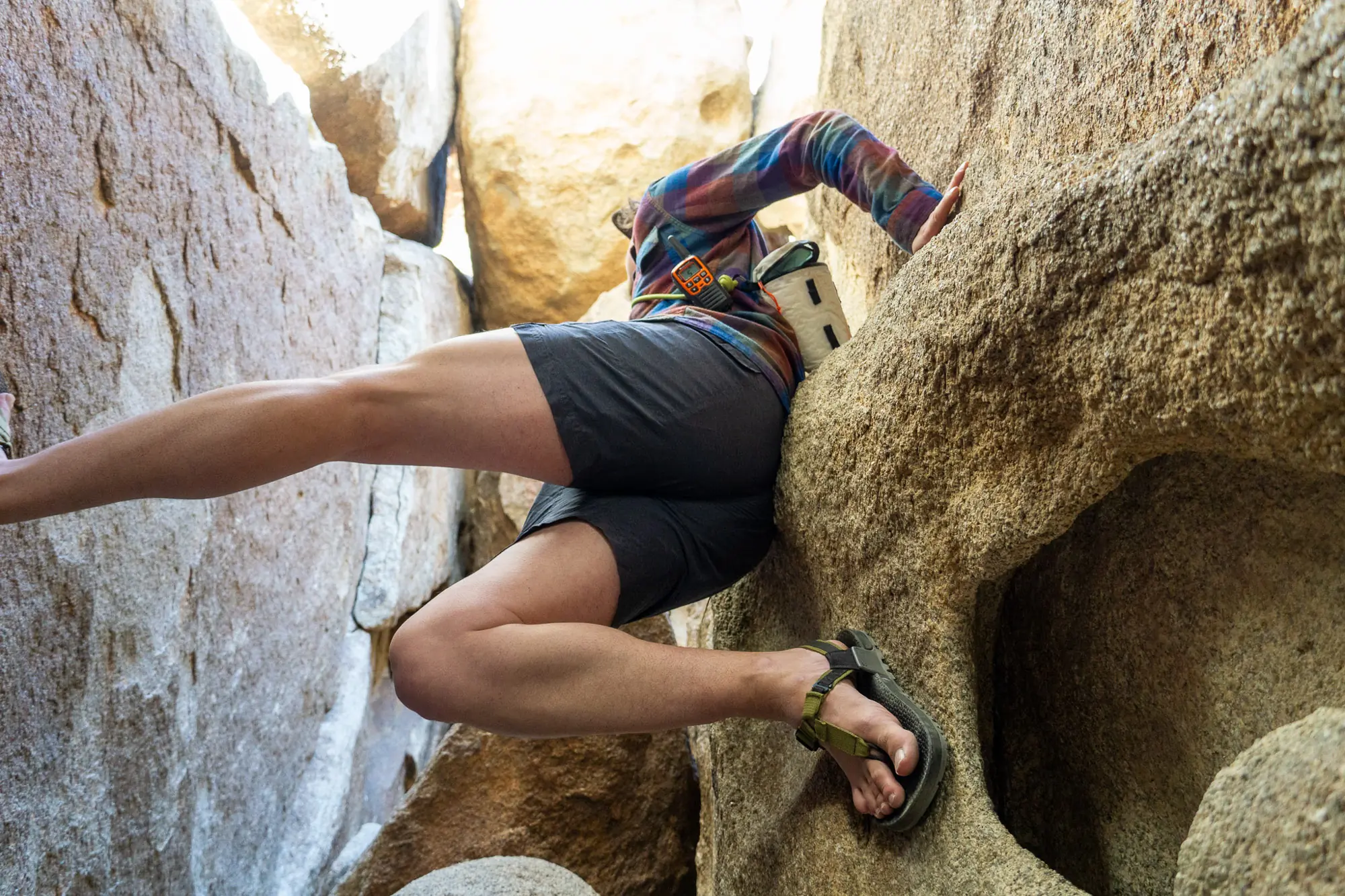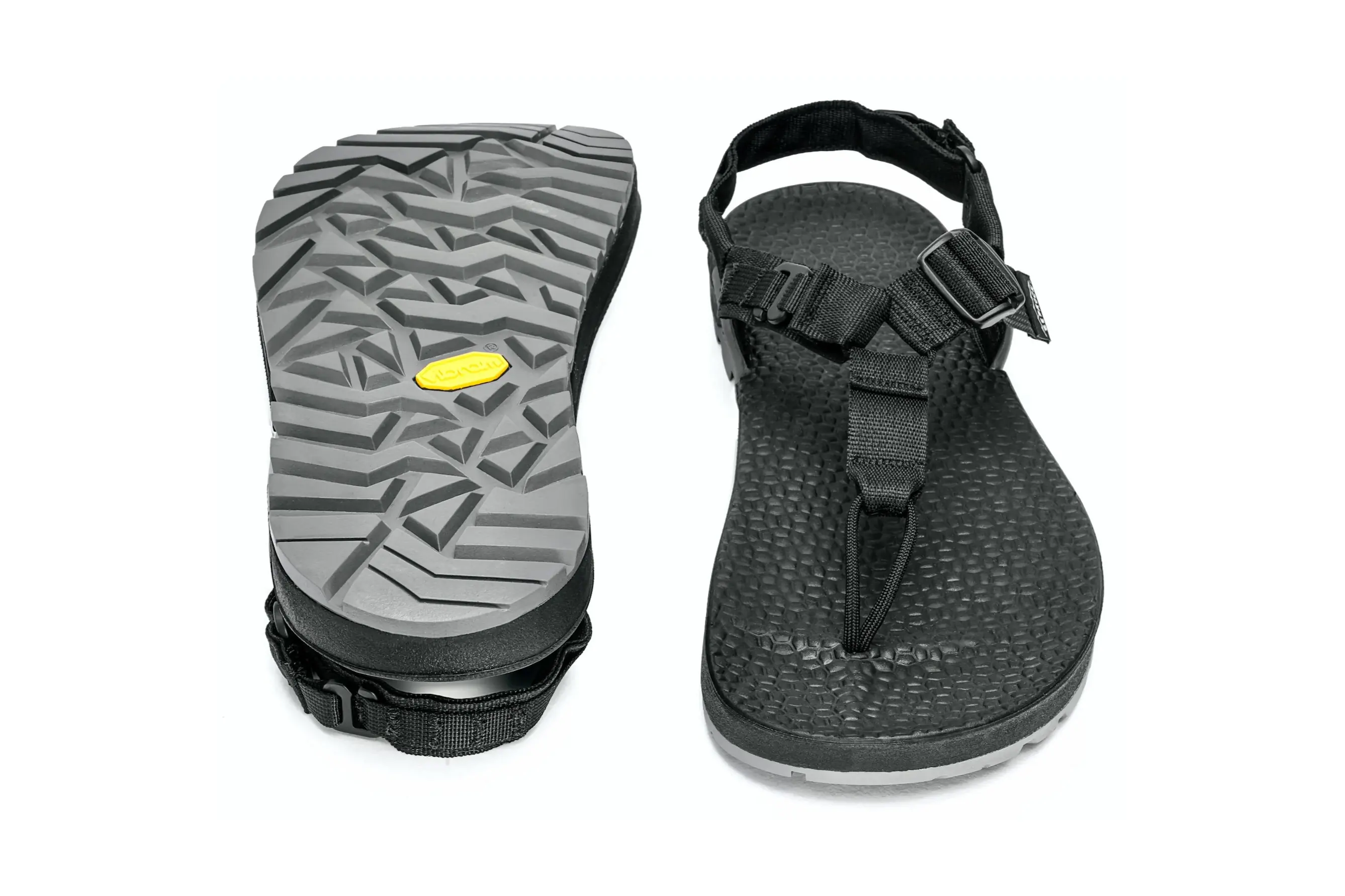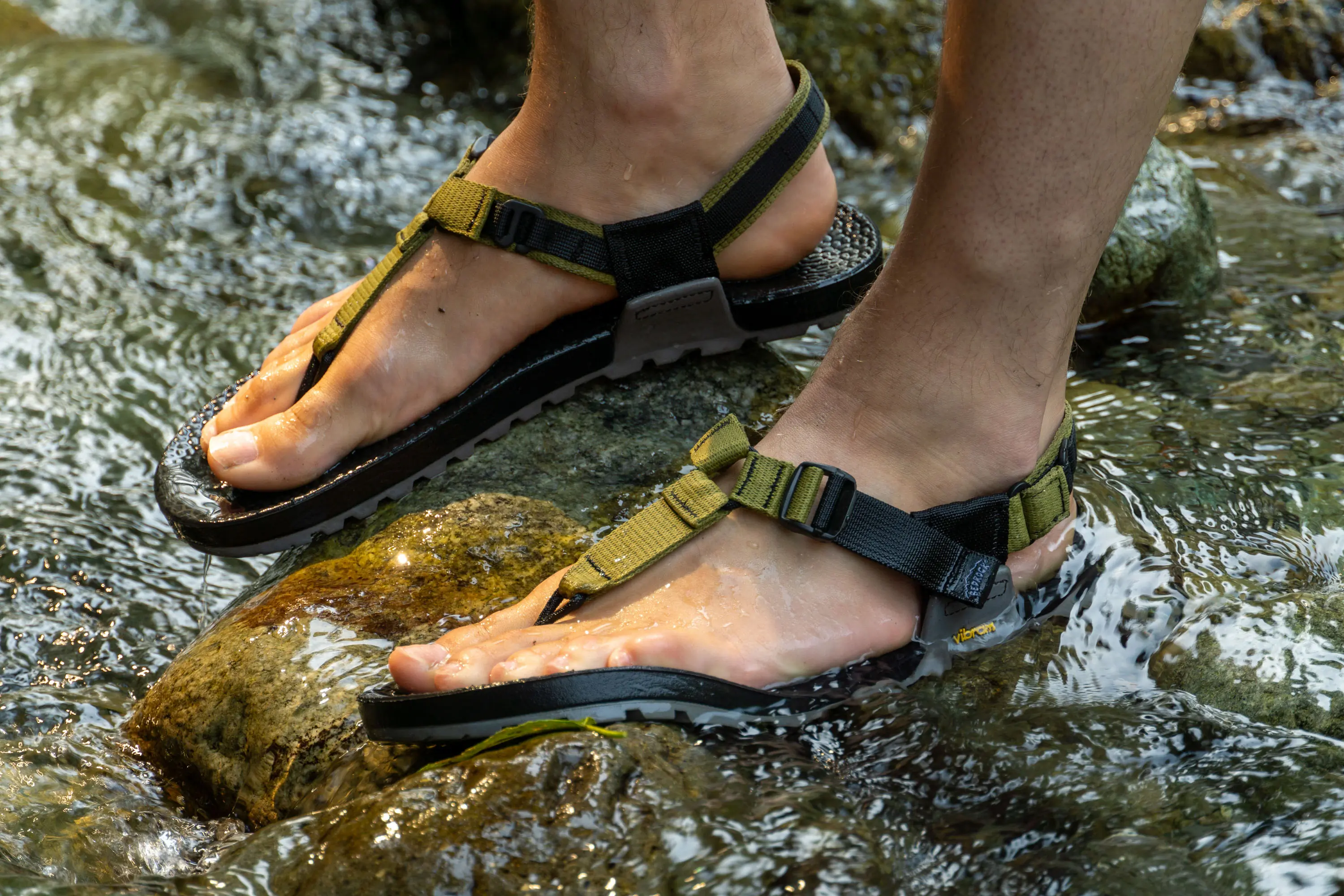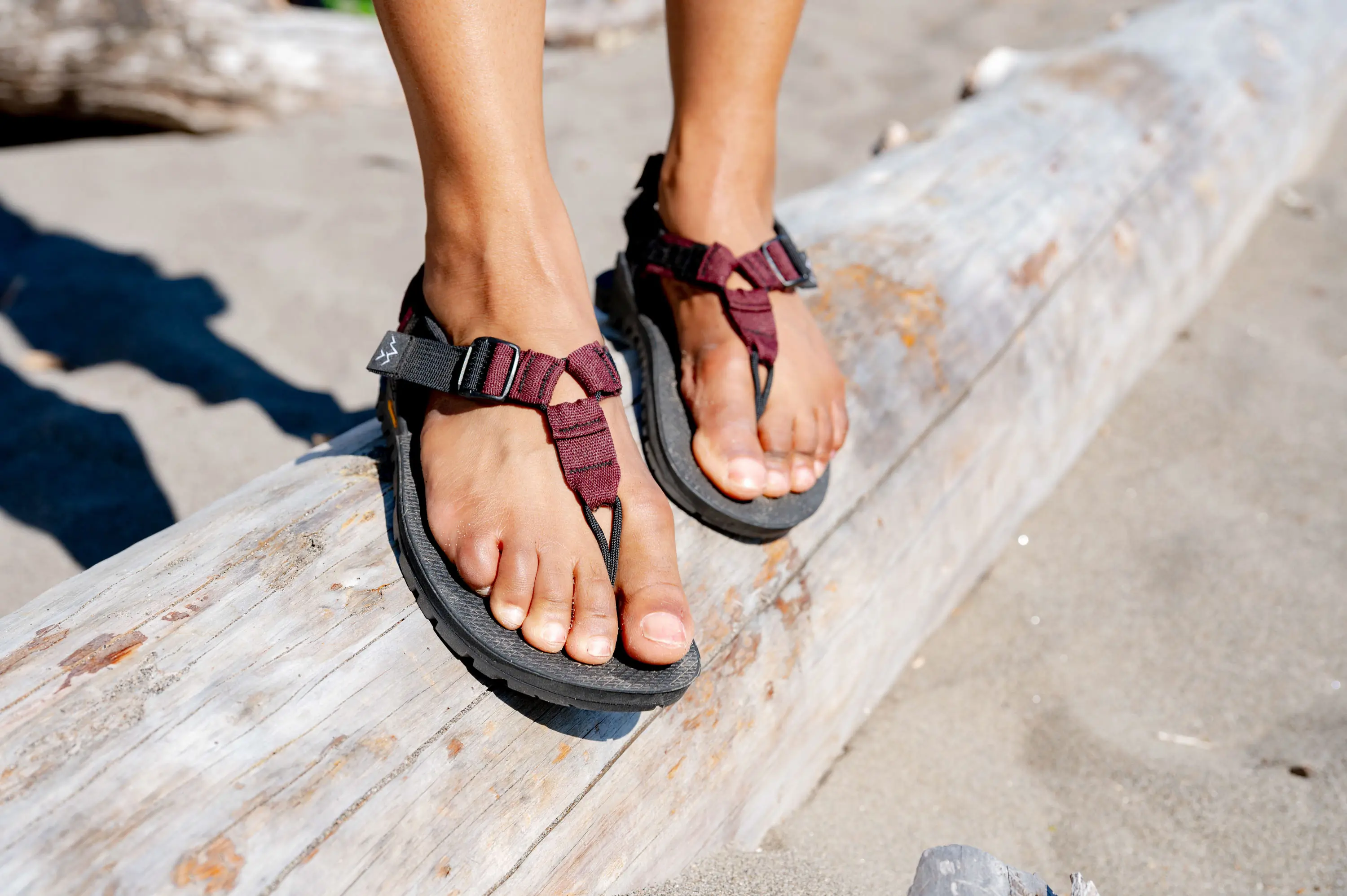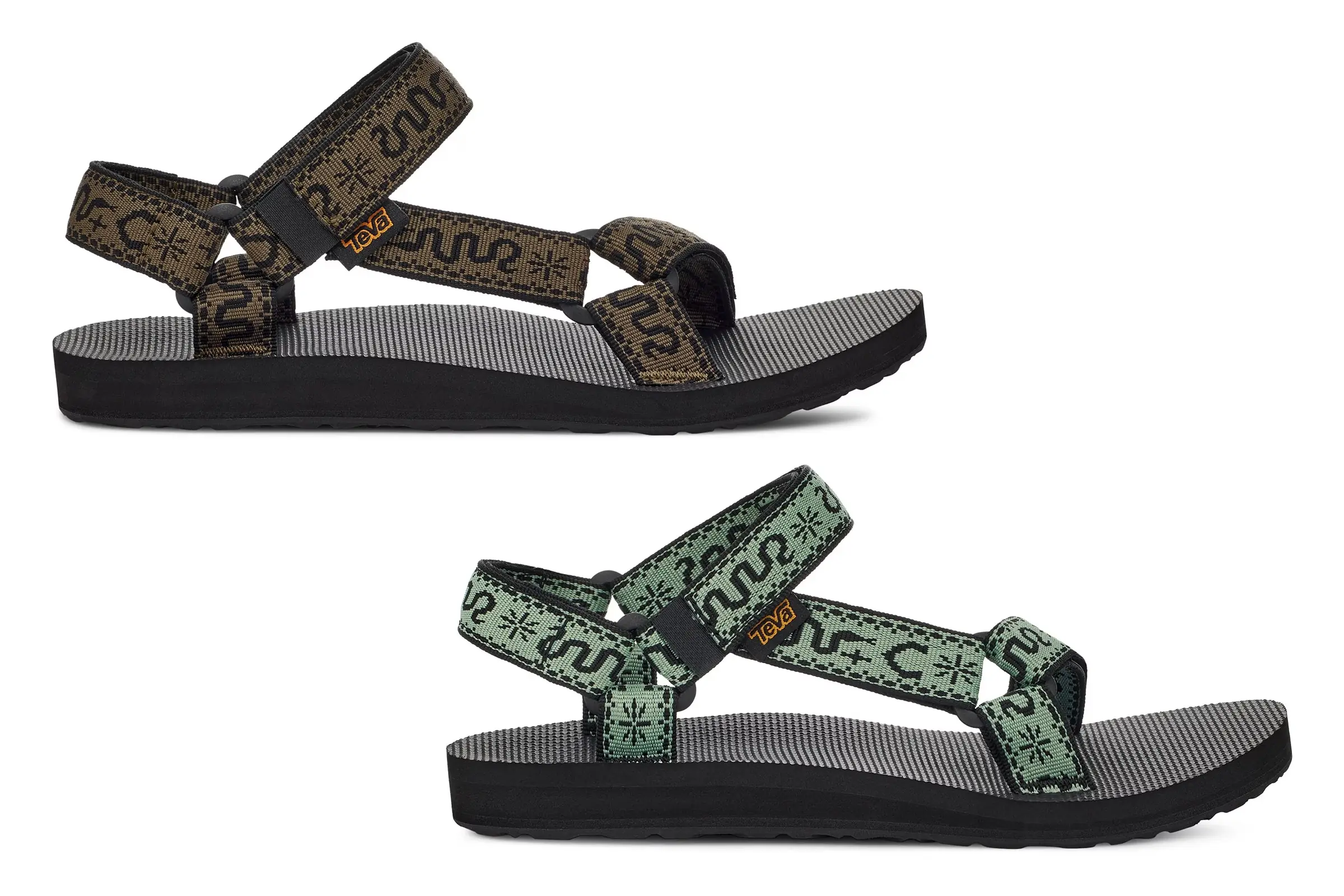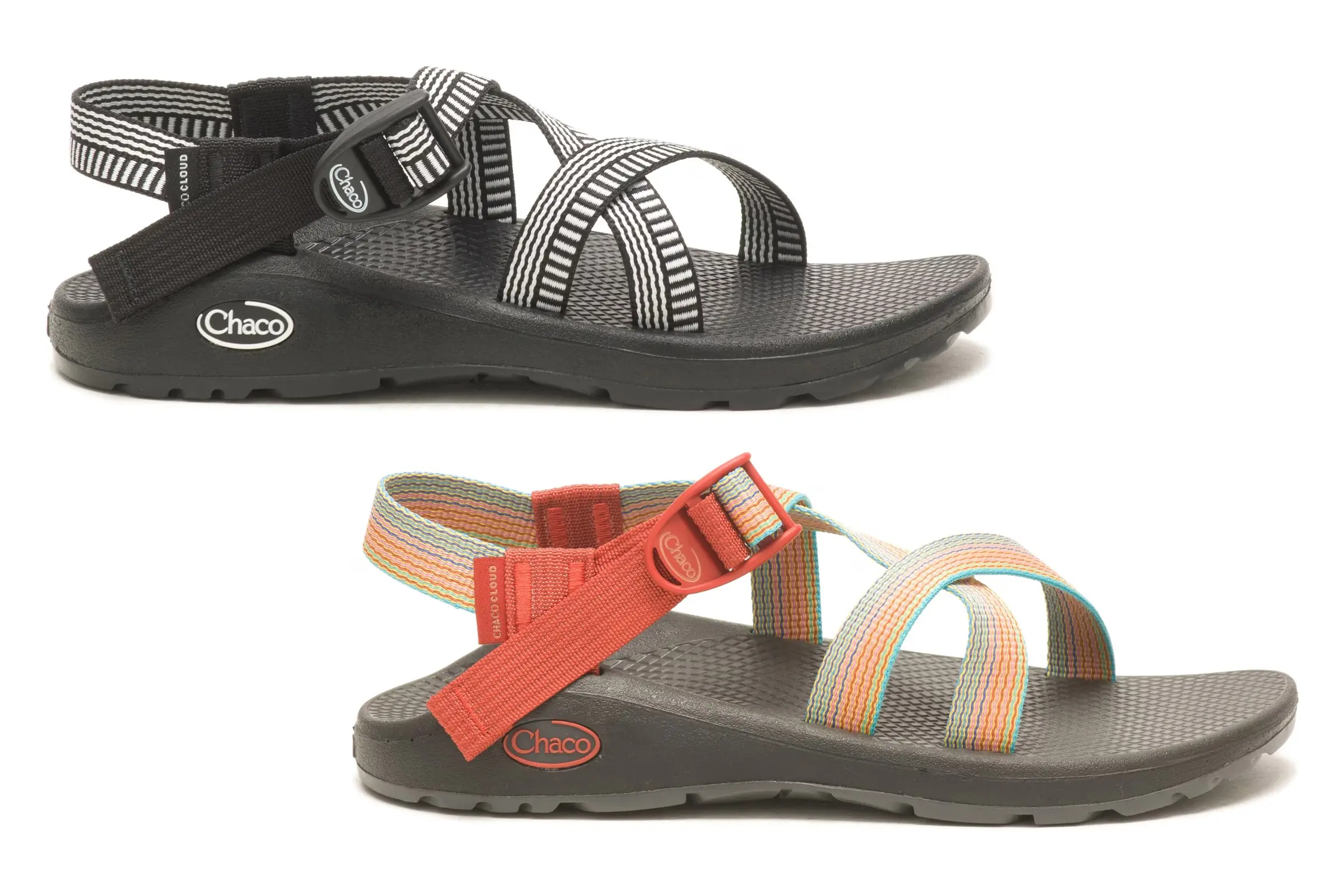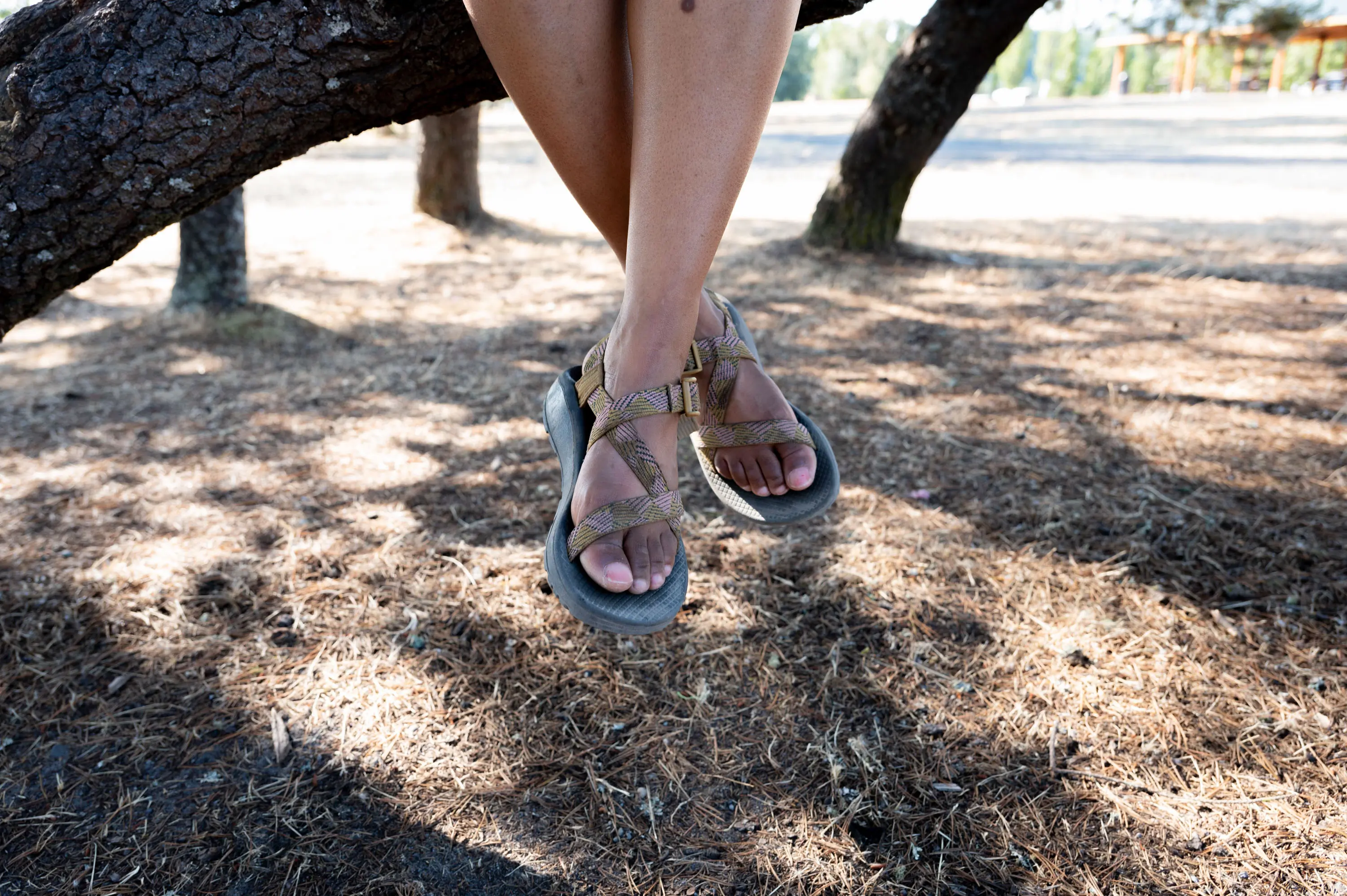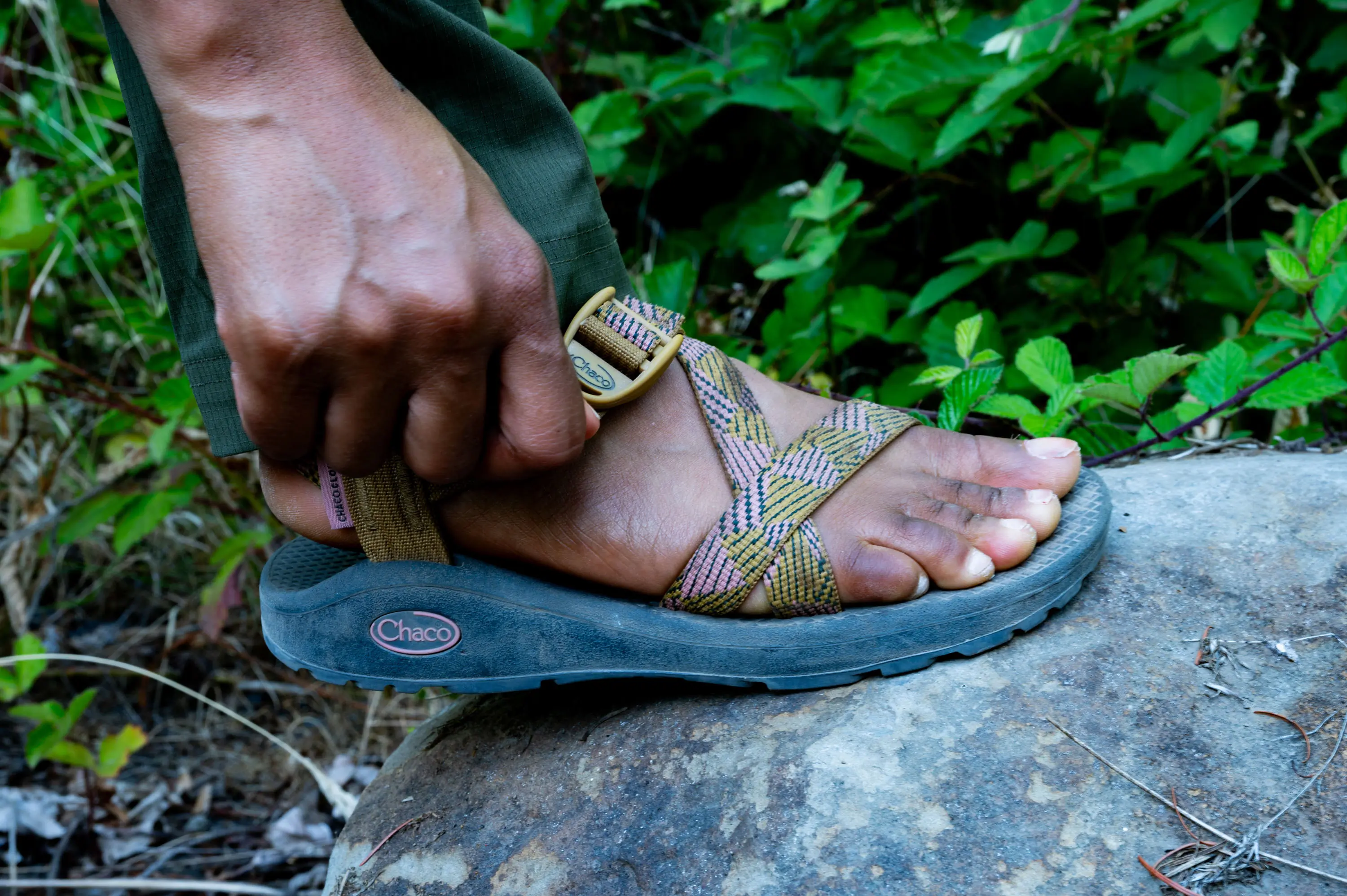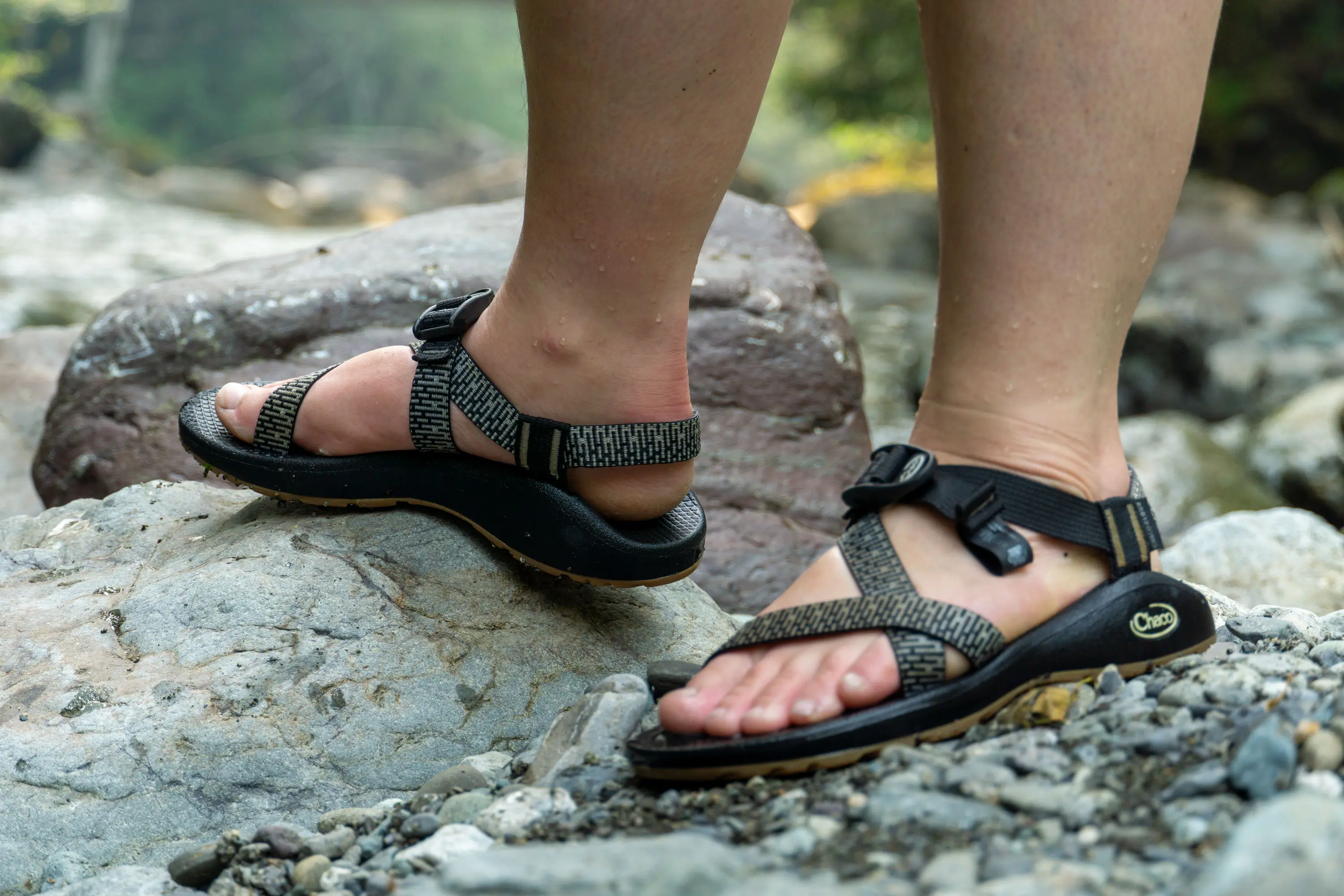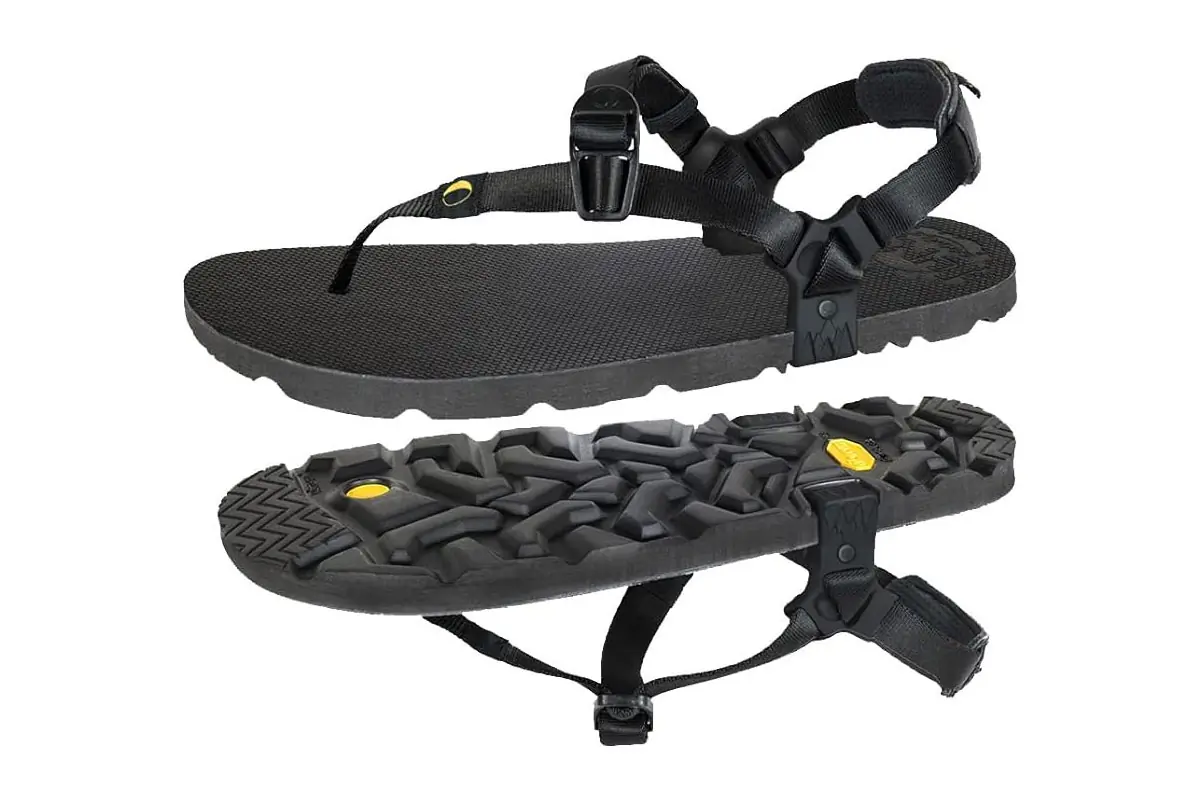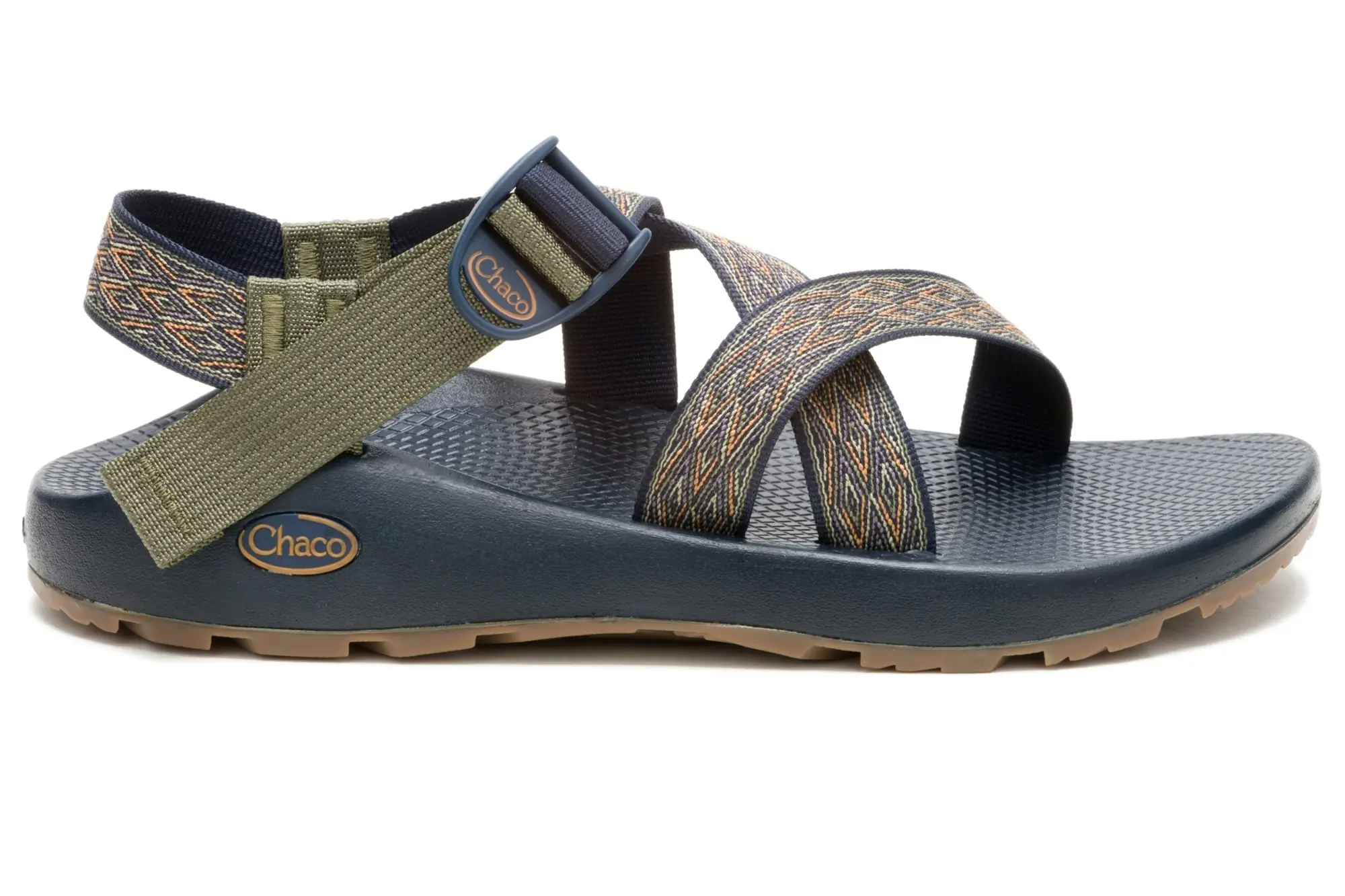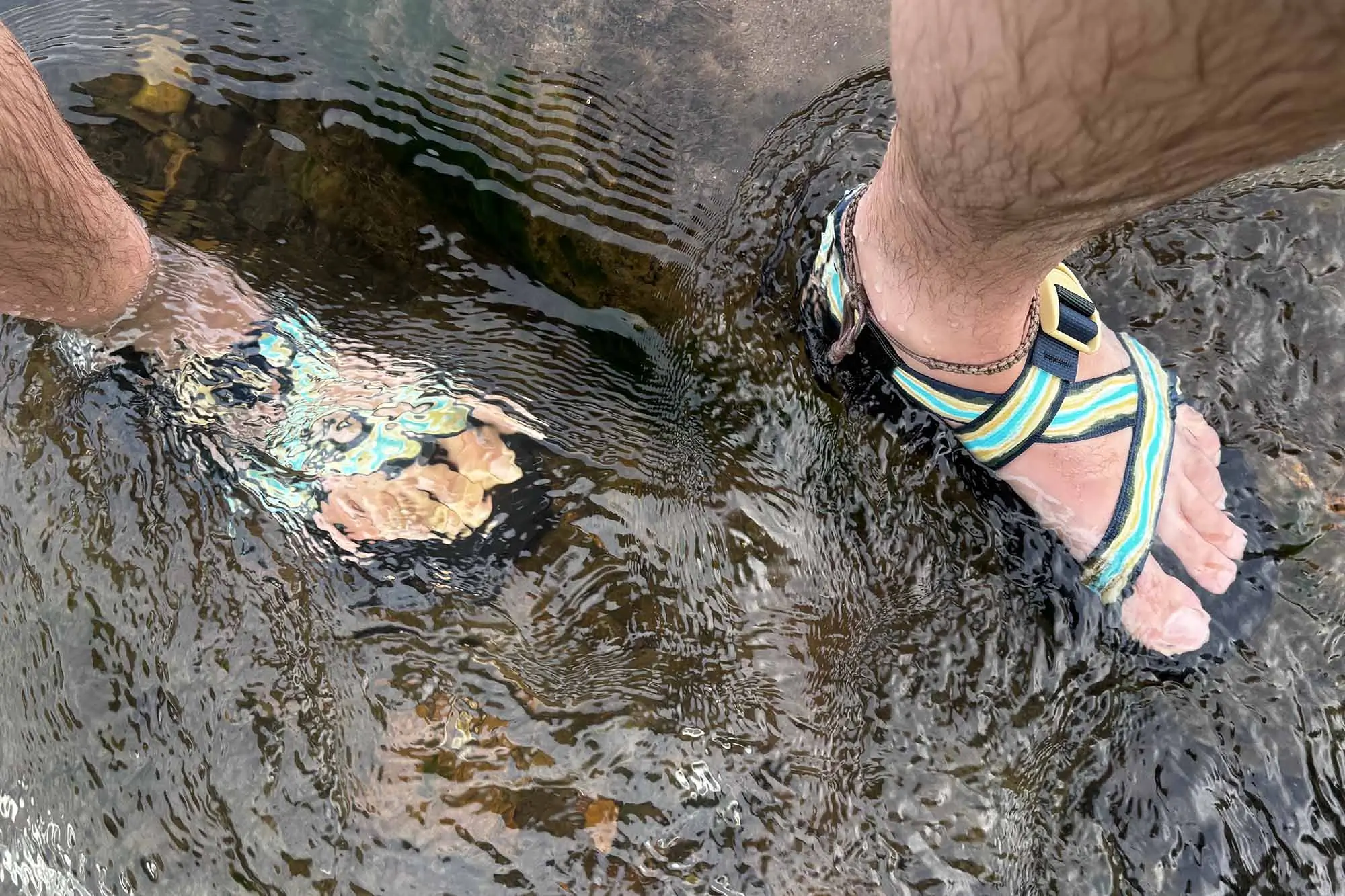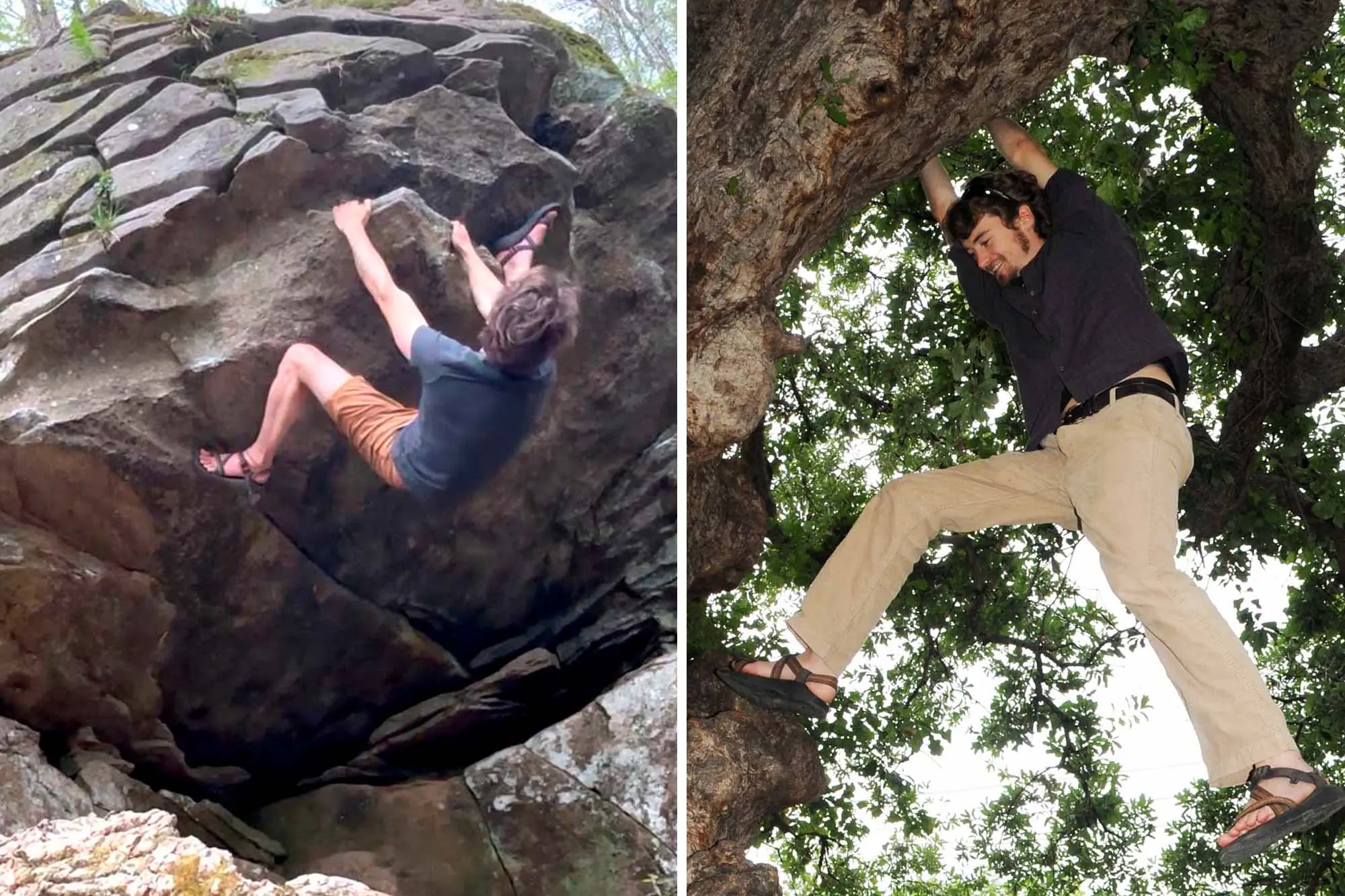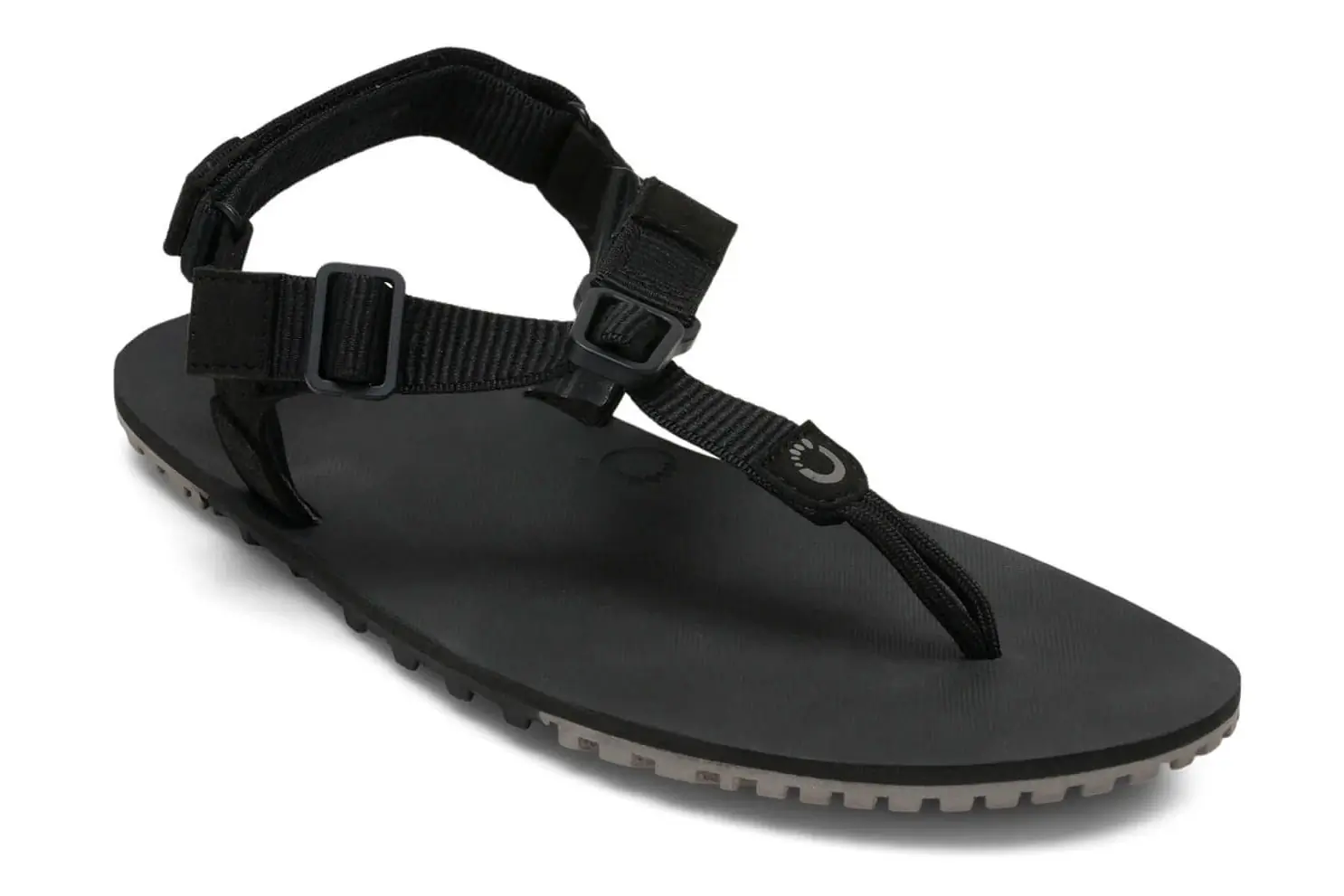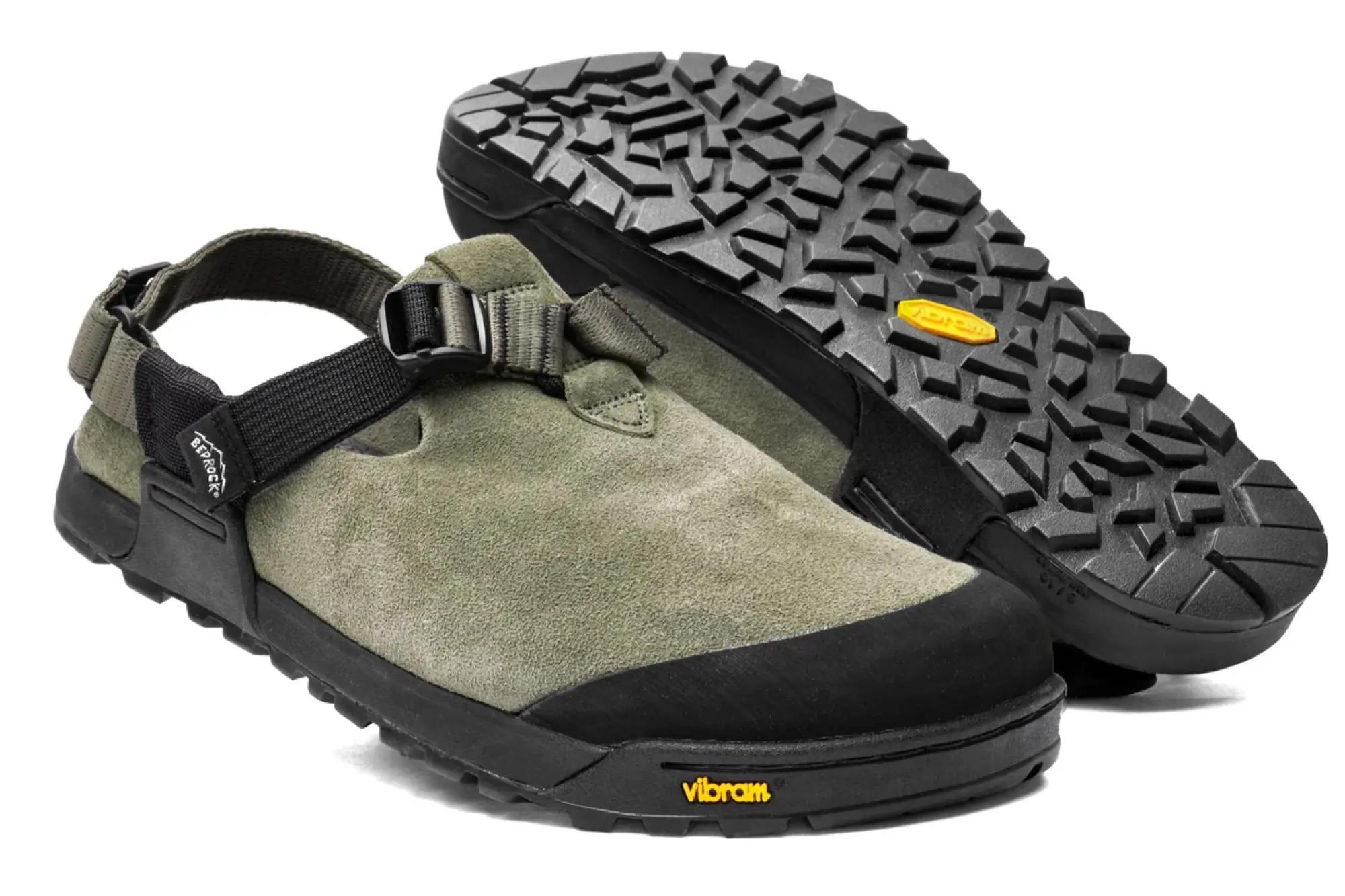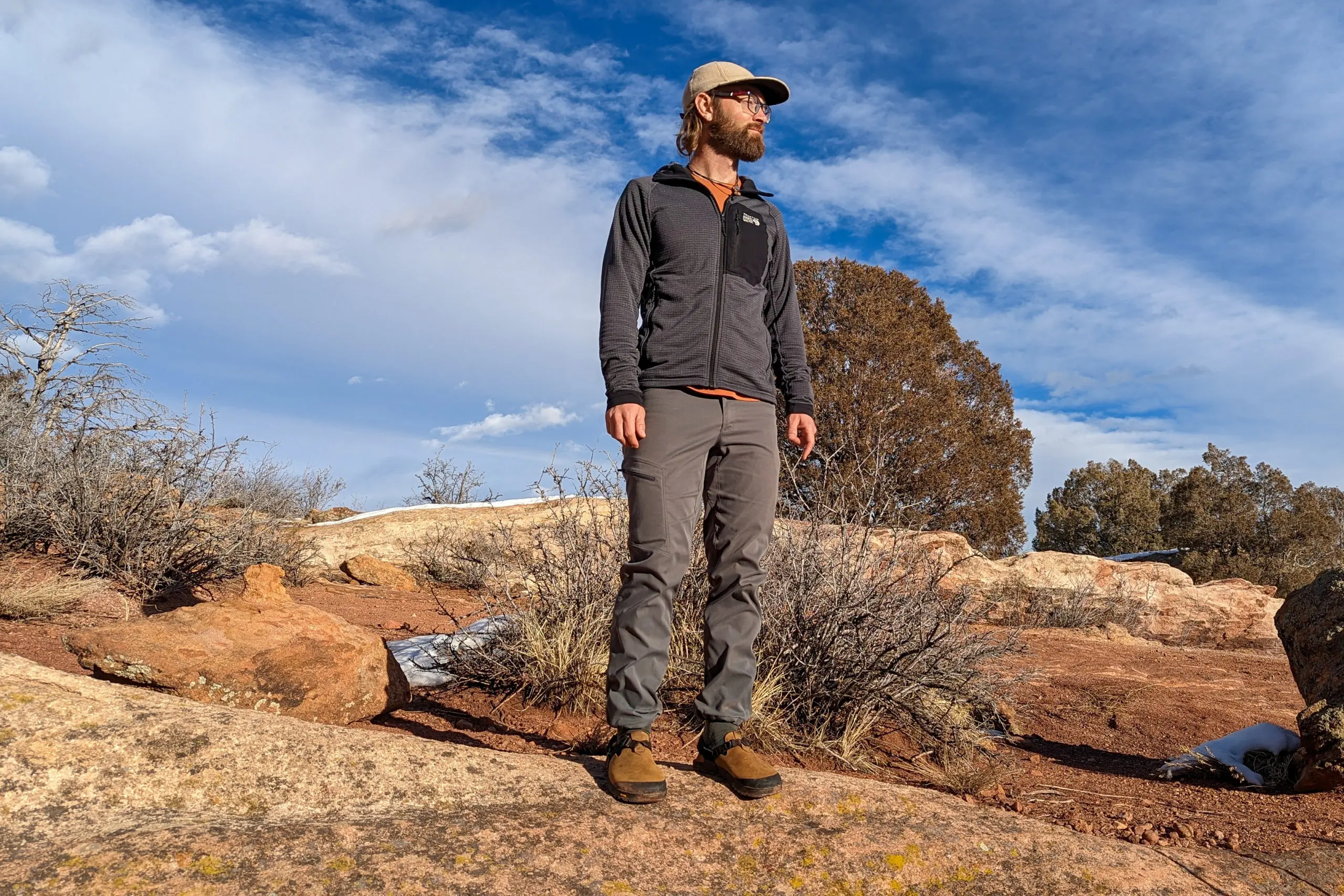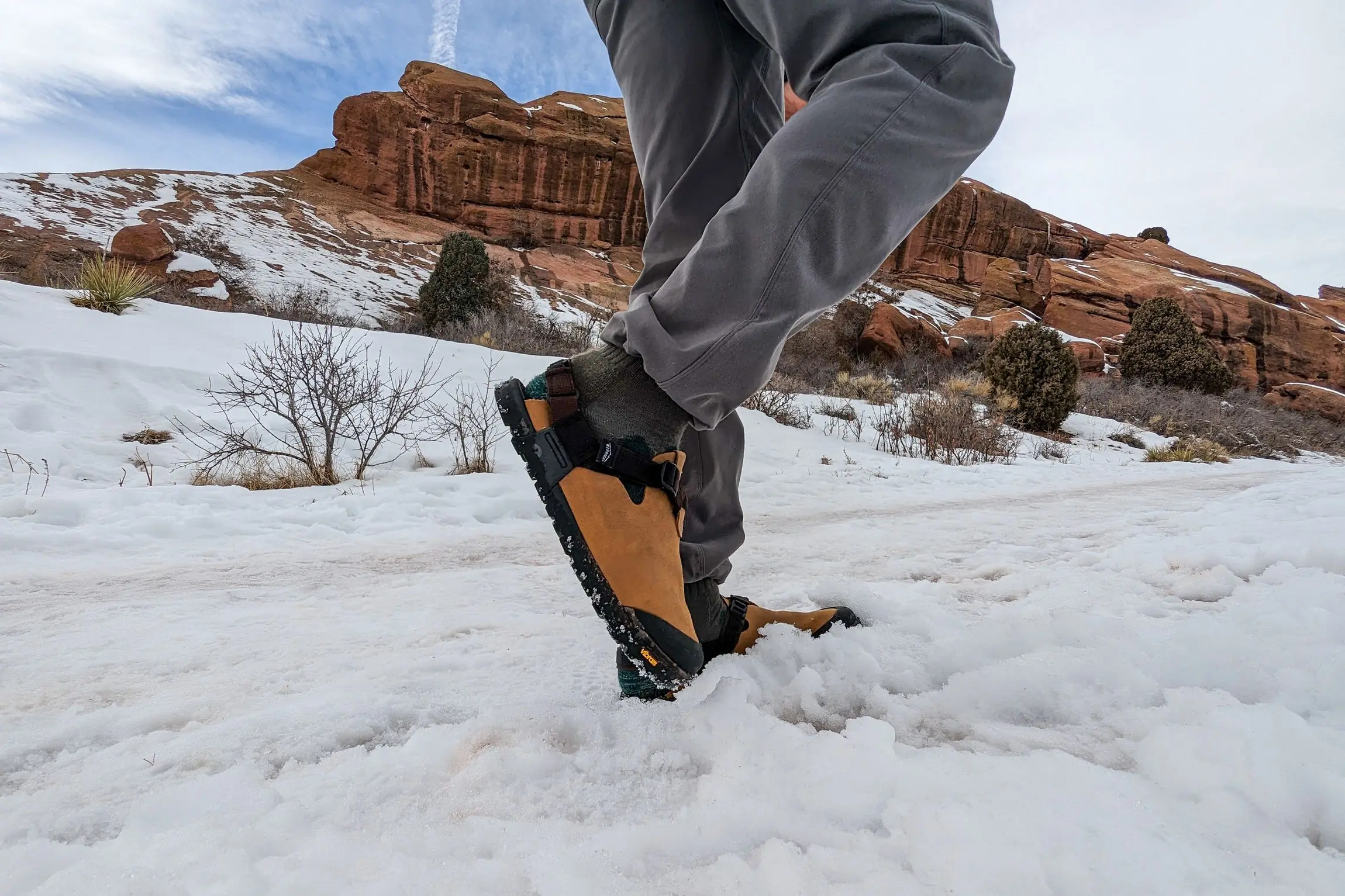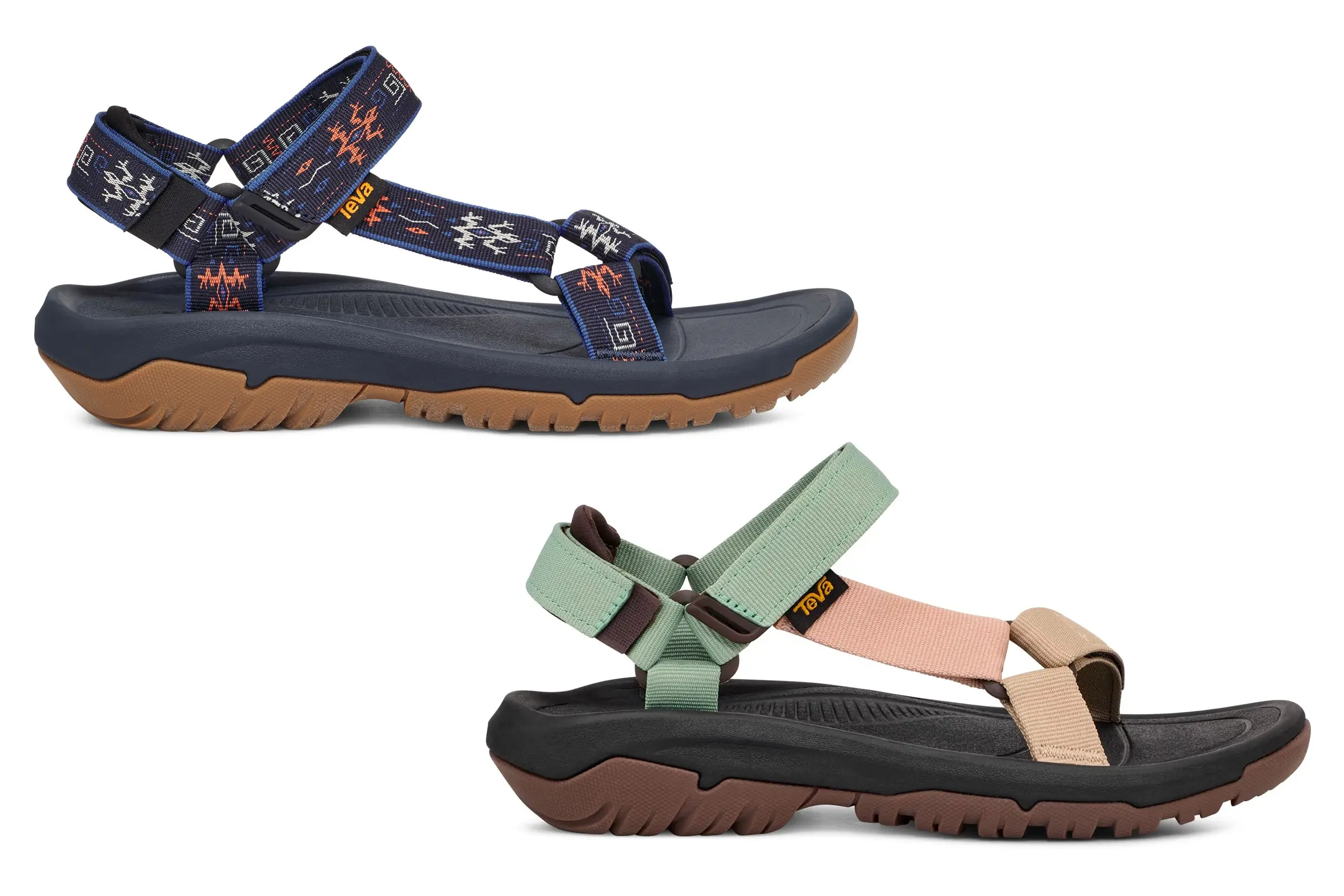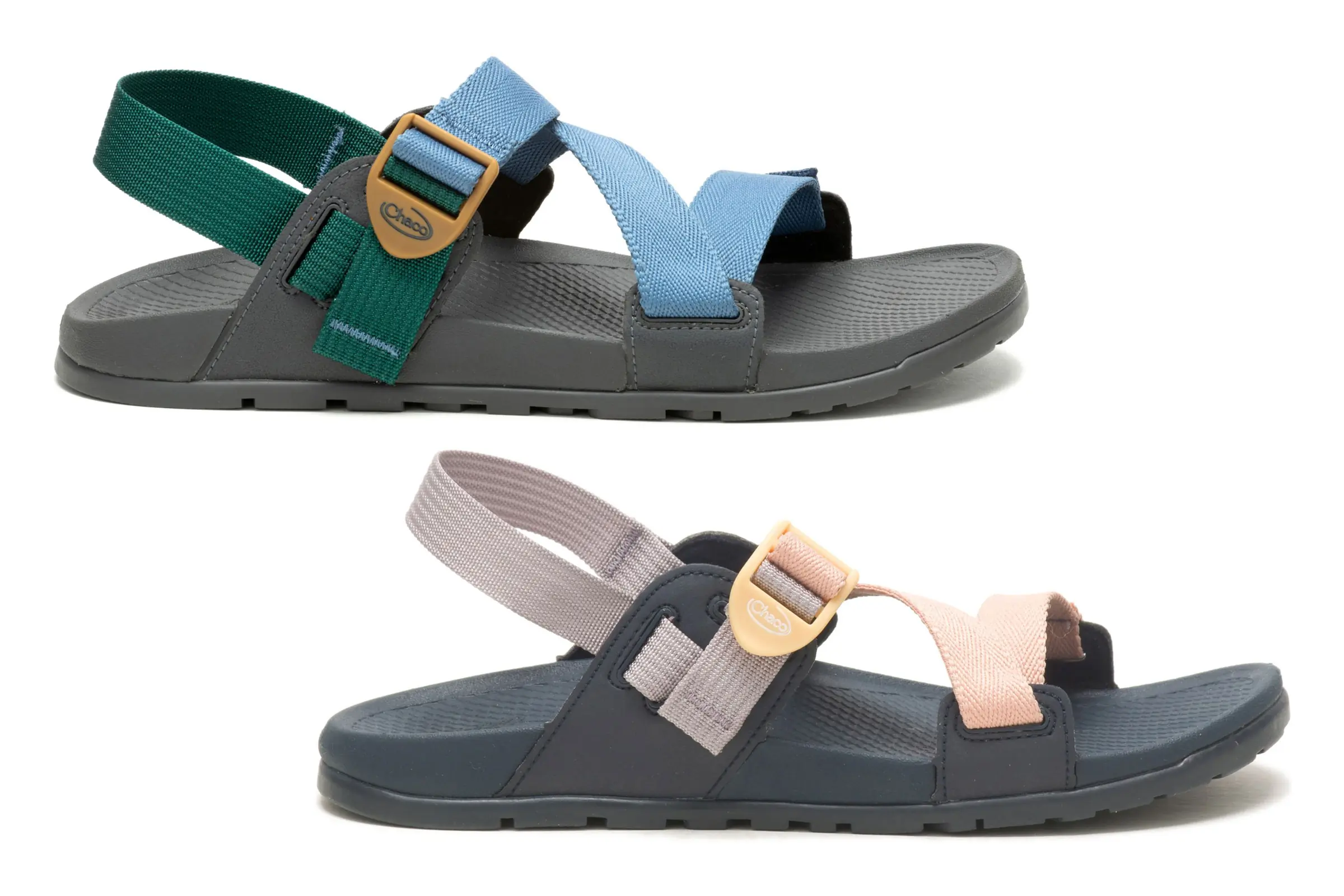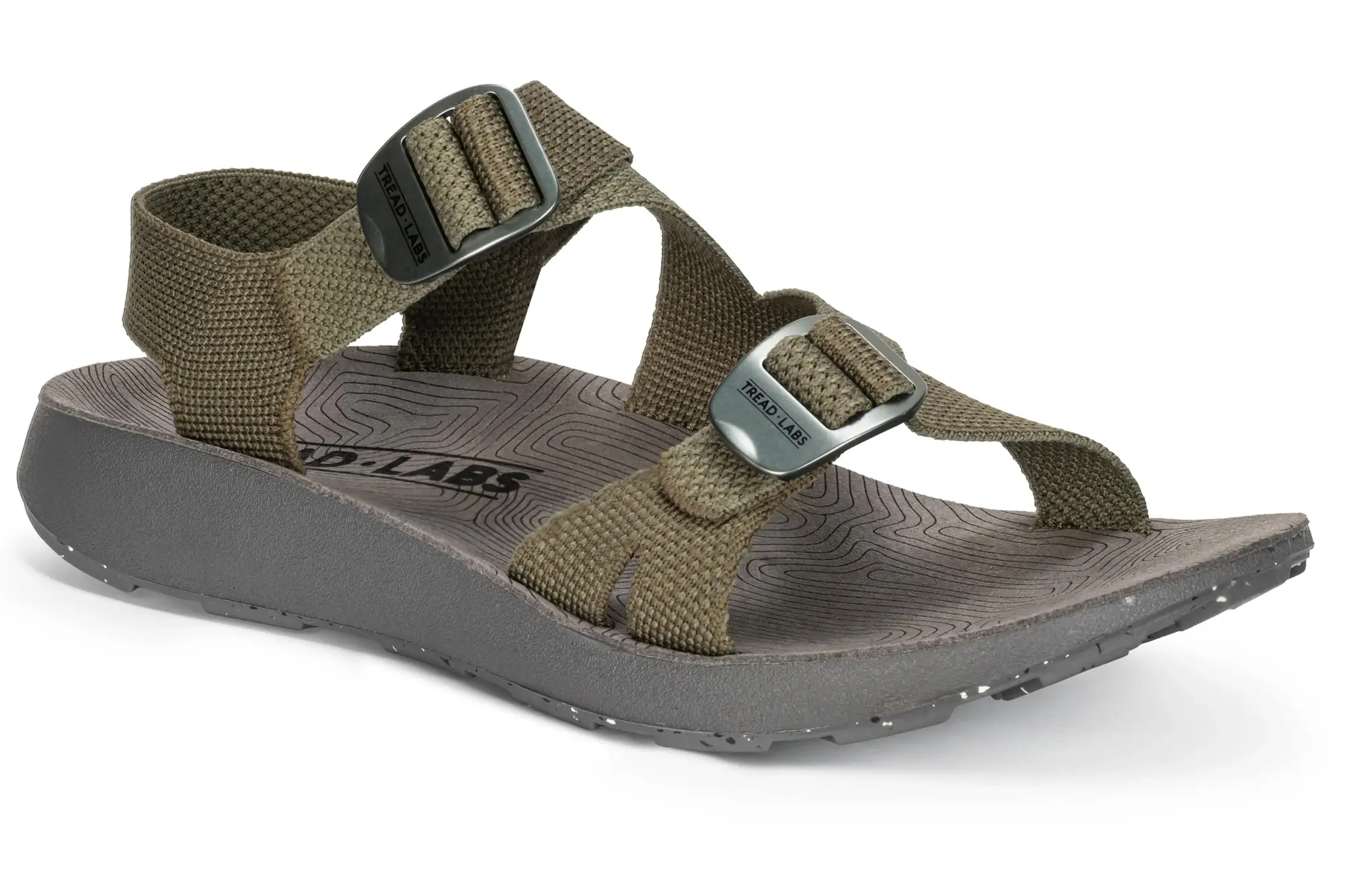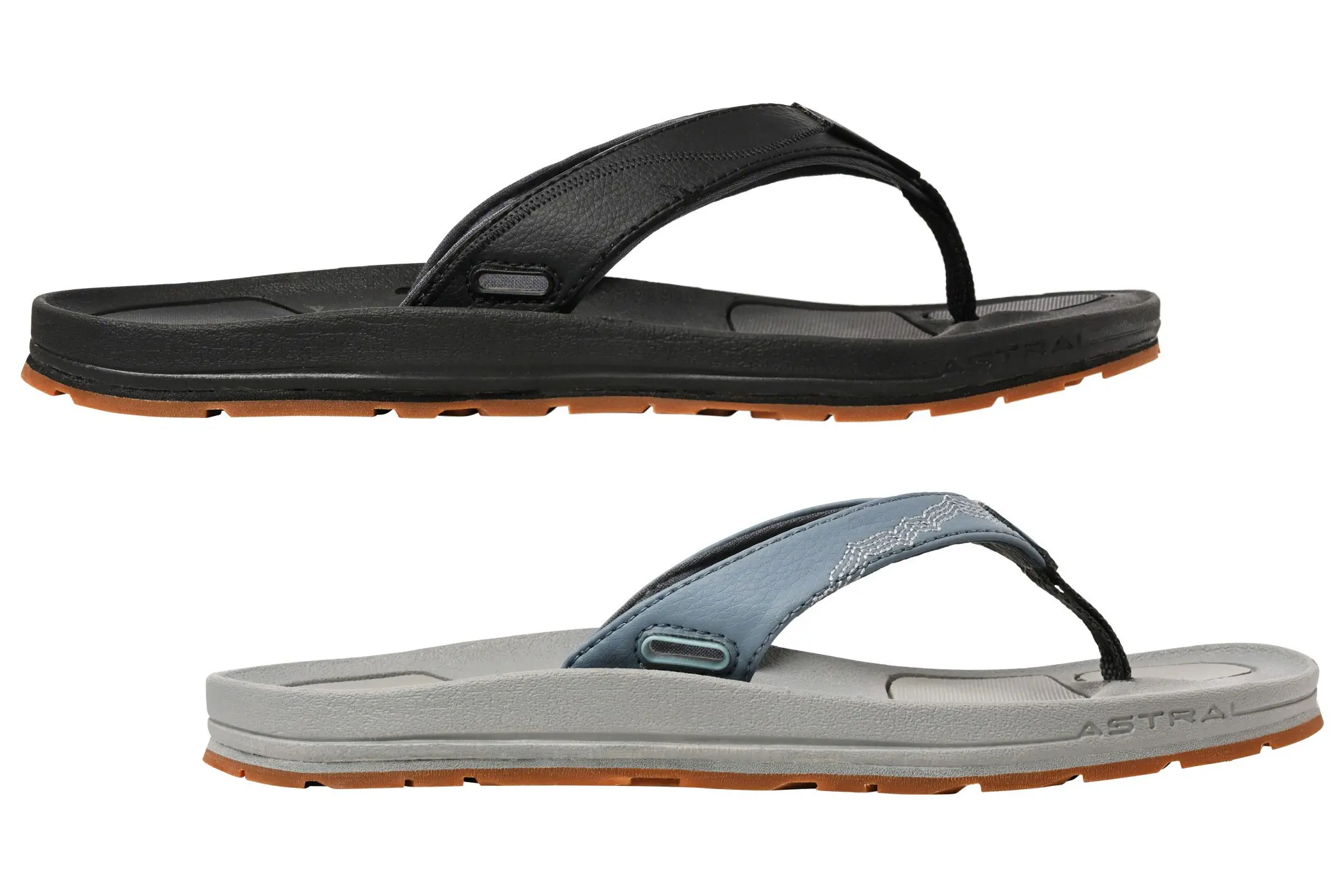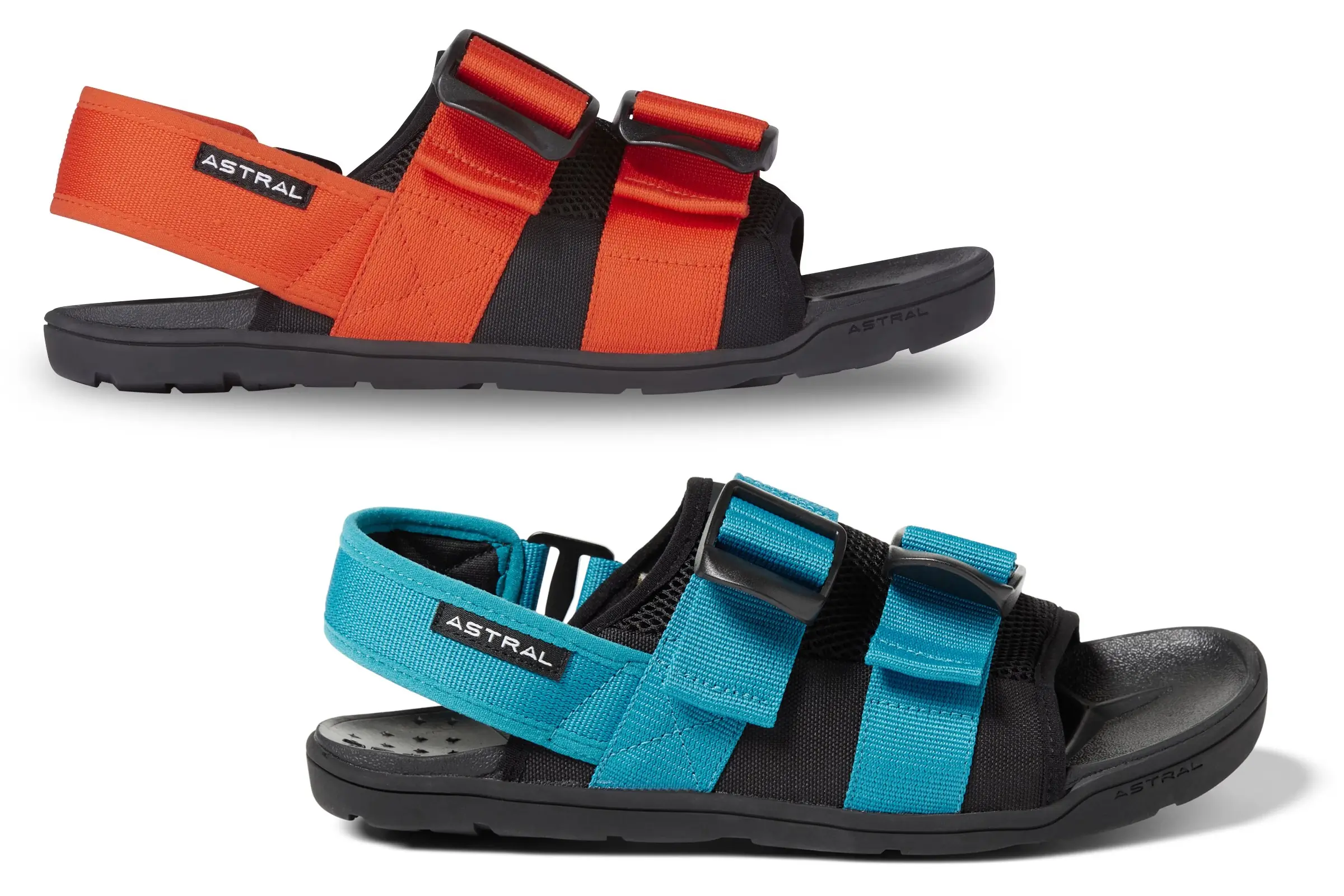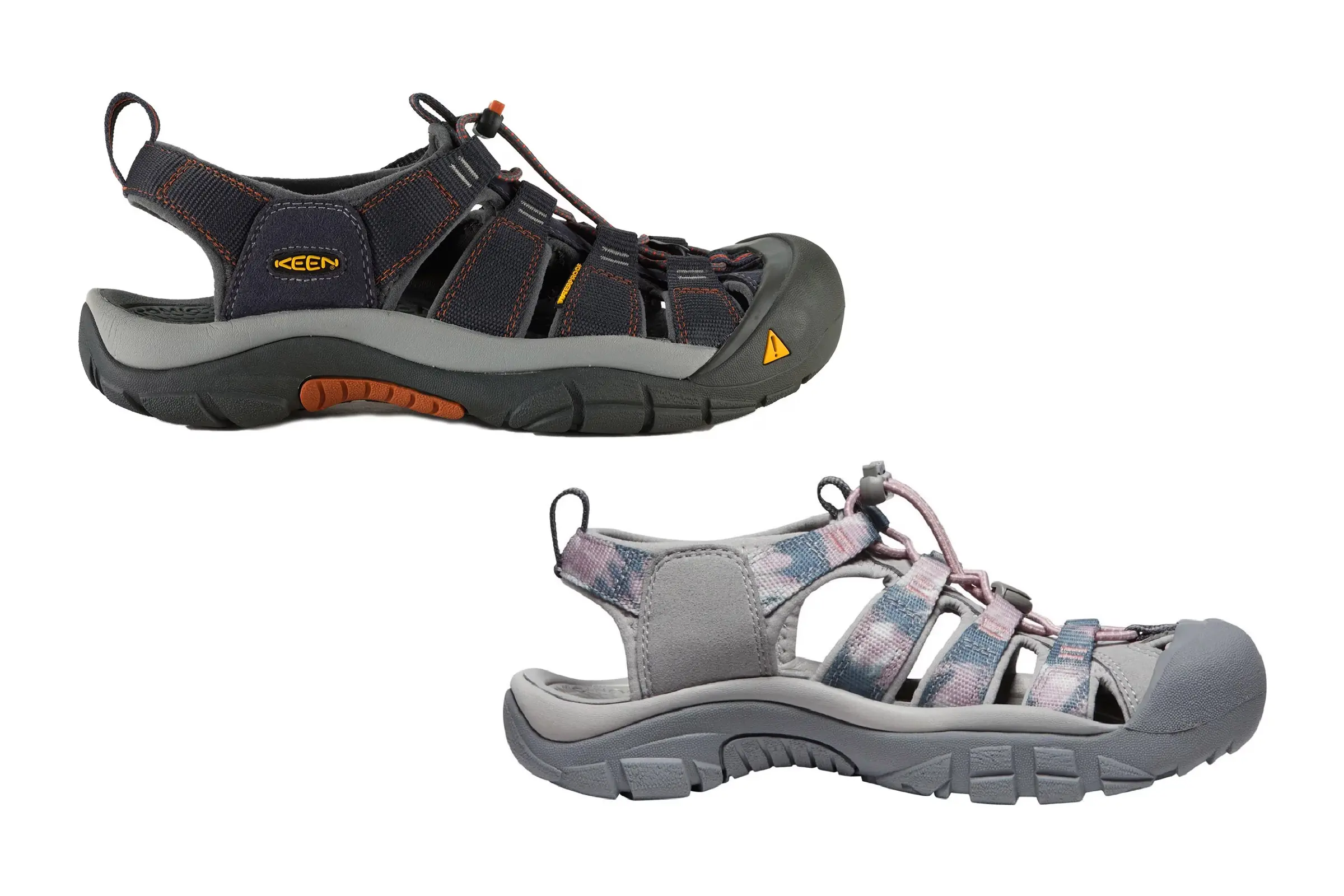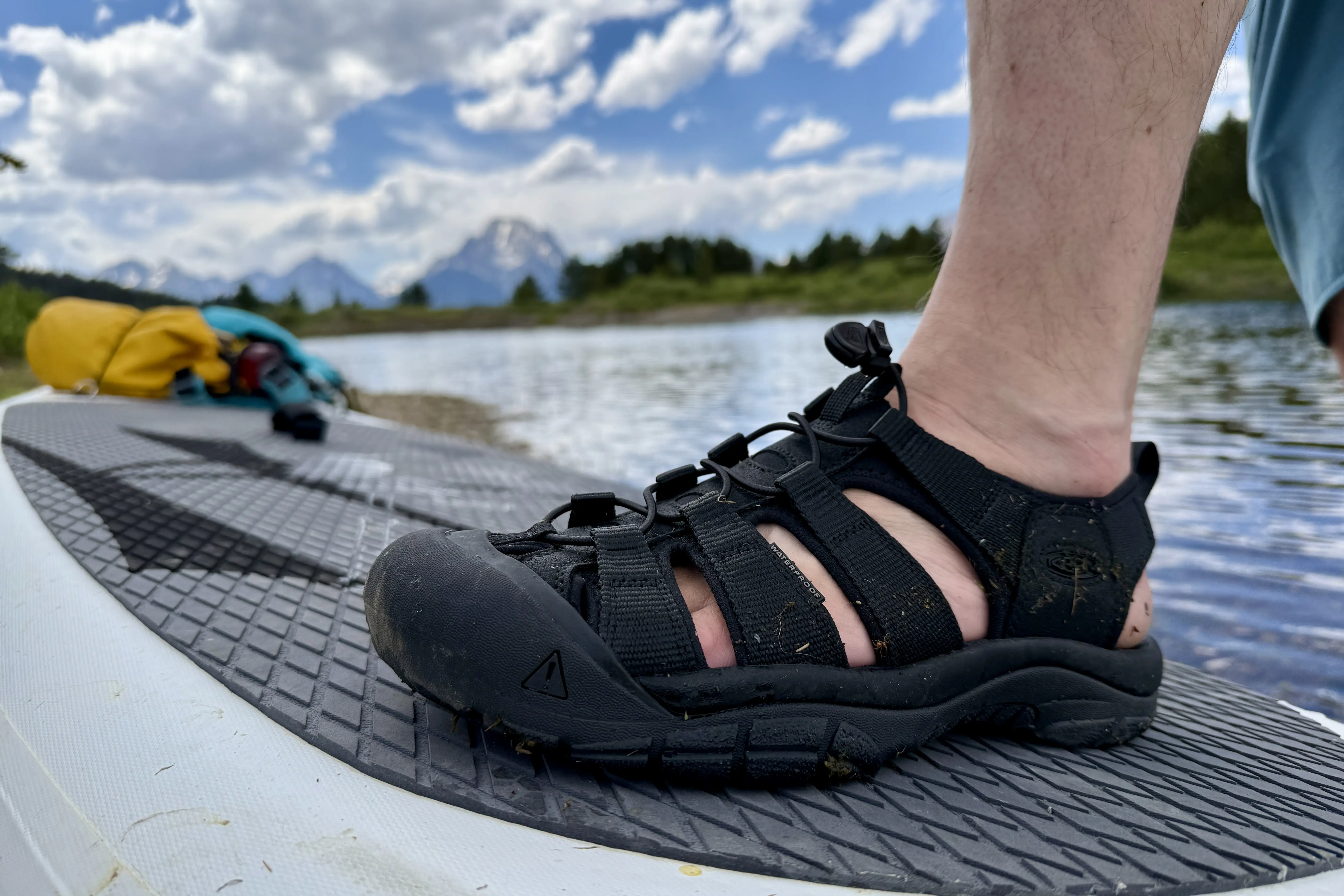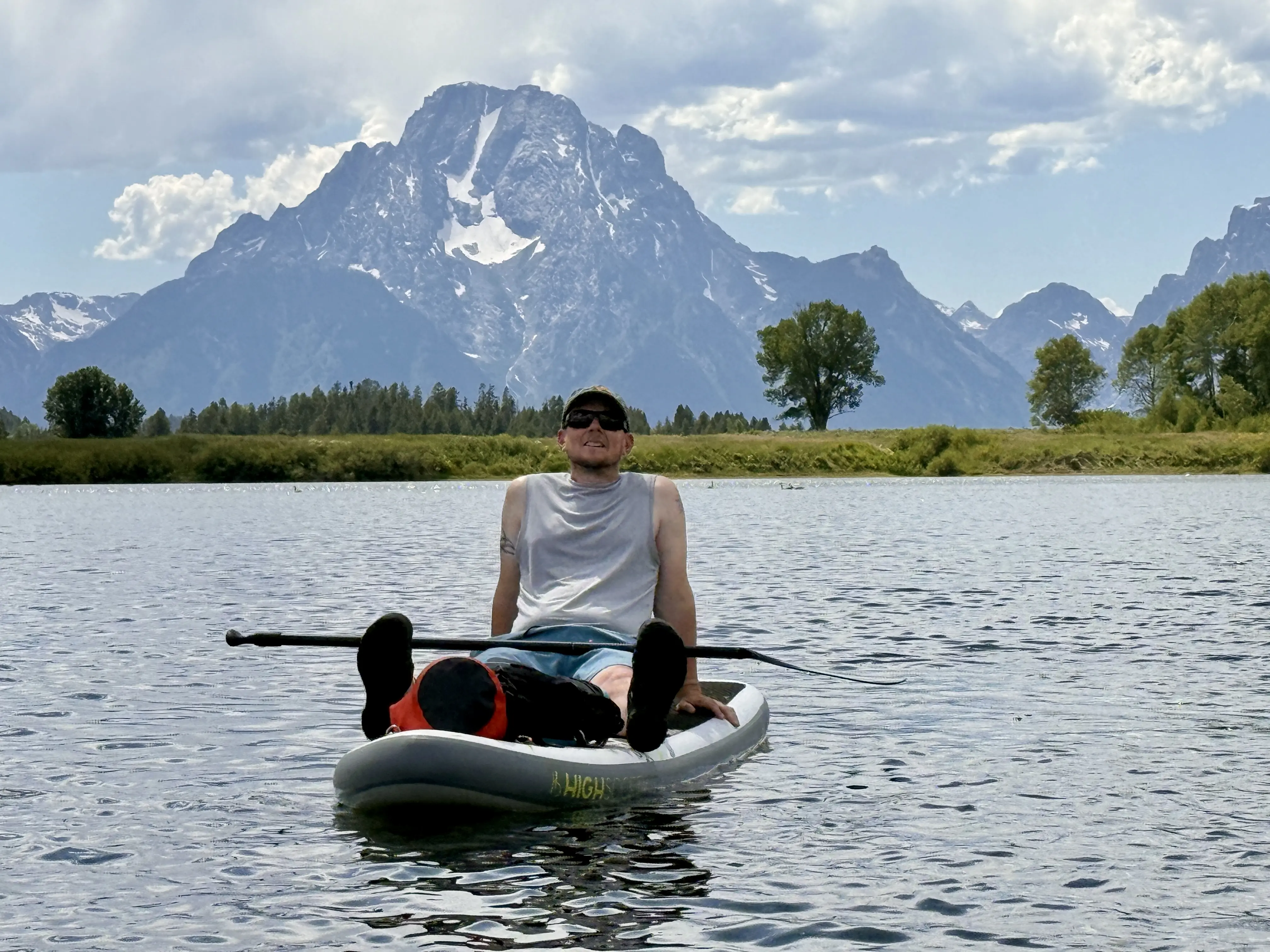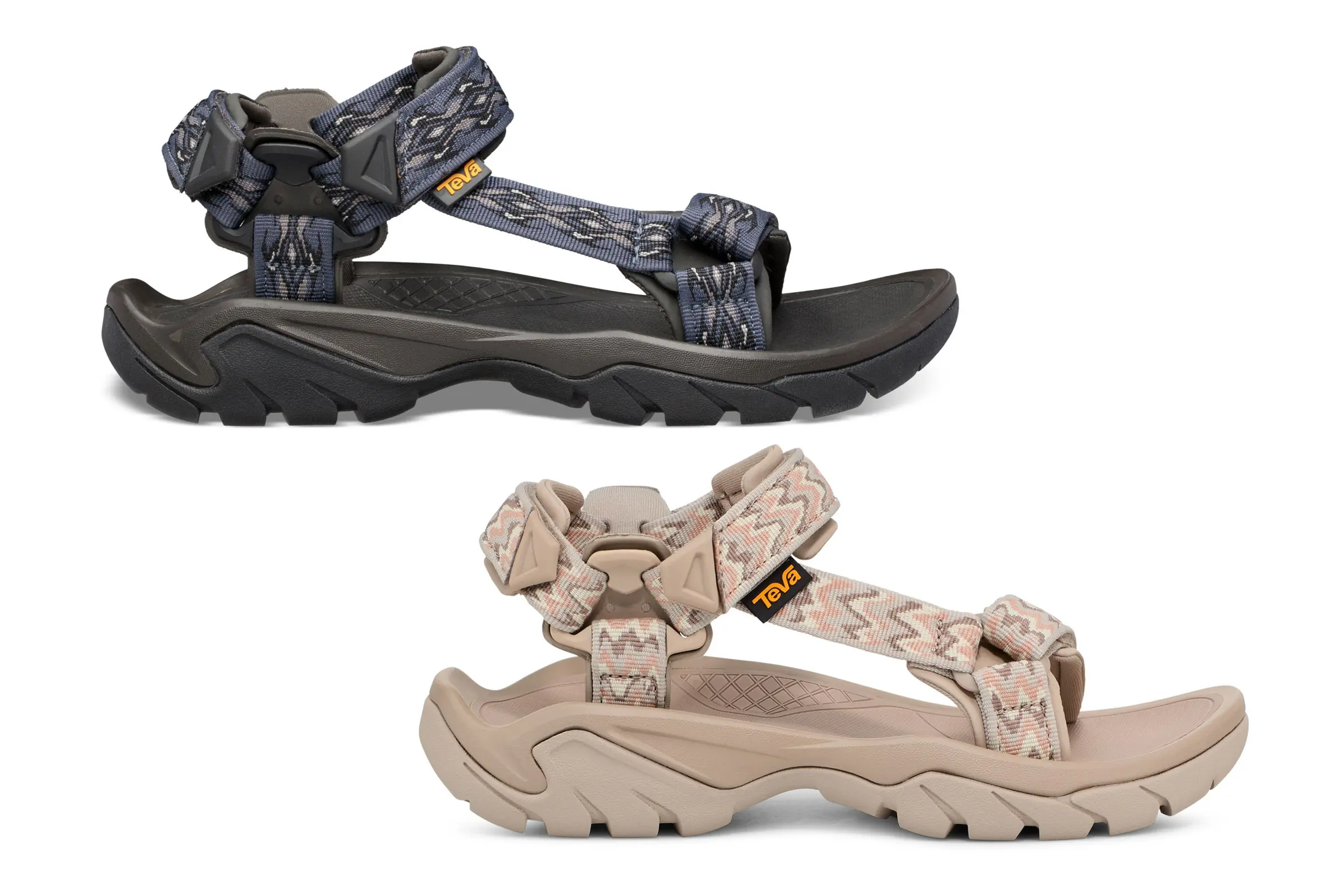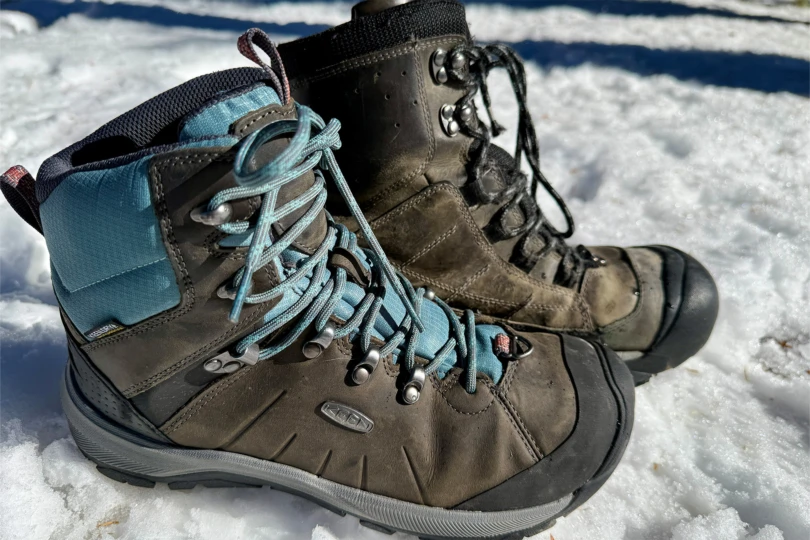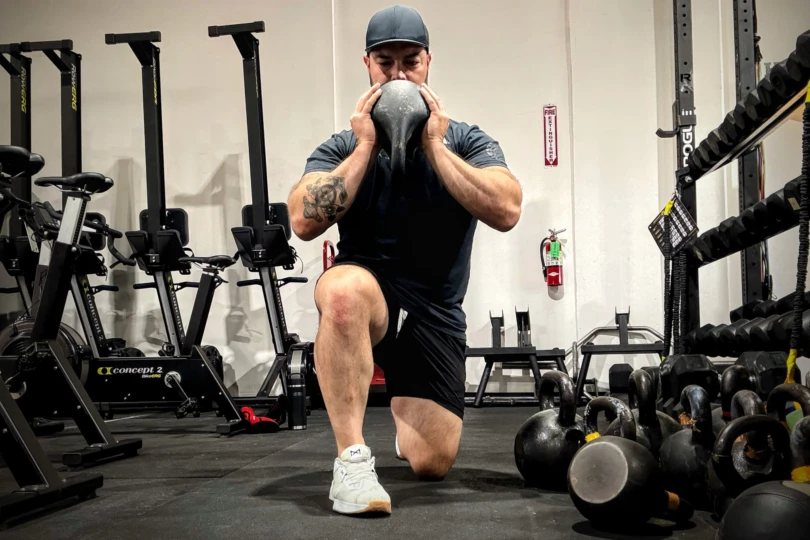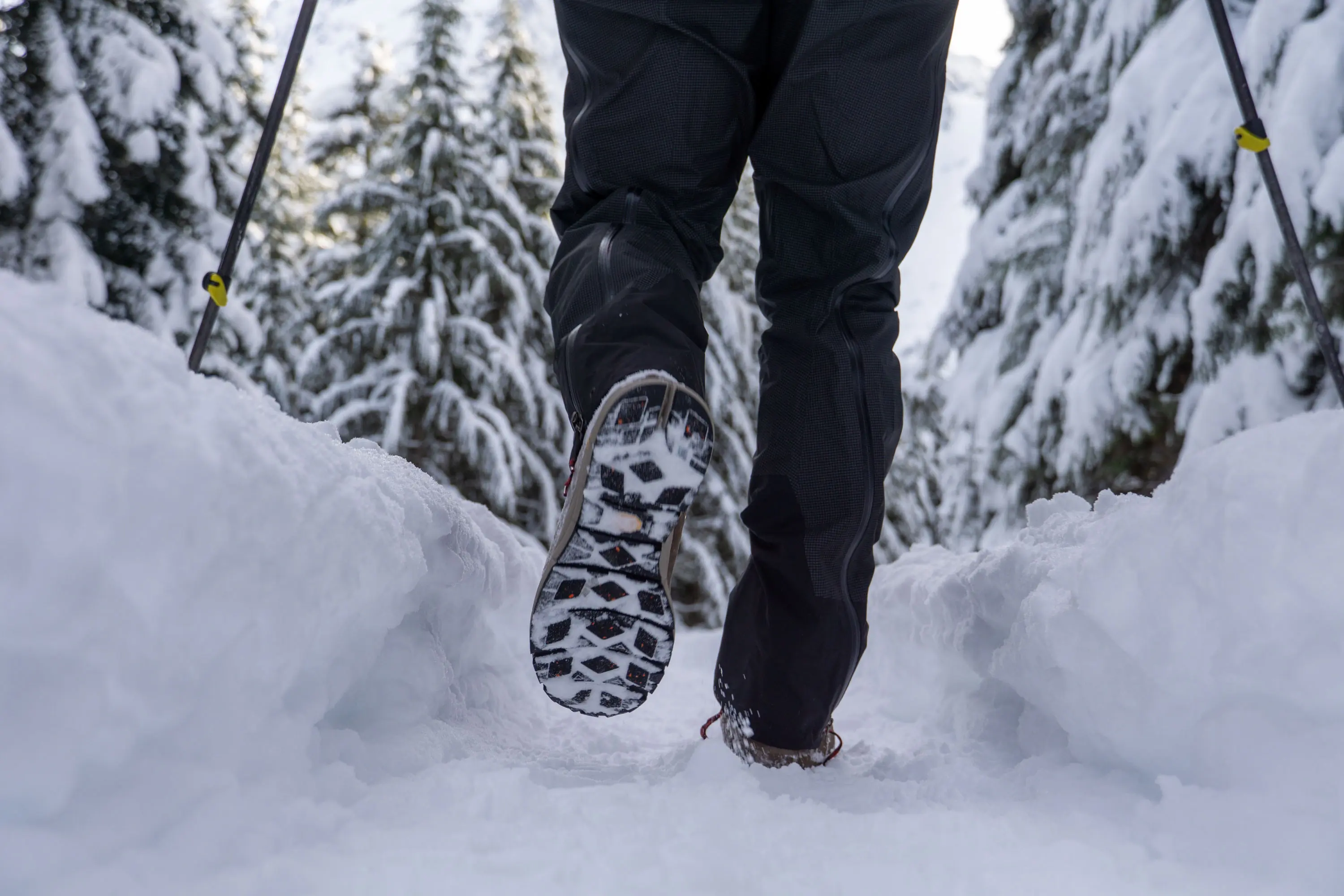Free your feet, and free your mind — the right pair of satndals is out there, and after multiple summers spent hanging ten in some of the best hiking sandals available today, we’ve pulled together the winners to keep cool with in 2025.
Included are options for every occasion: From adventure-ready sandals like our top pick, the Bedrock Cairn Evo 3D Pro, to casual kicks like the Teva Original Universals that pair with nearly anything. Our experts paddled miles of whitewater in them, scrutinized the horizon for waves in them, and toted them along on thru-hikes of the Pacific Crest Trail.
Rest assured, every set of sandals we considered underwent our rigorous testing regimen and were compared in their traction, comfort, support, and adjustability. We spared no creative testing scenario — or stubbed toe — in our quest to find the best sandals, and our trials included input from seasoned sandal enthusiasts from across the spectrum. Below are the hiking sandals that made the grade in our books.
Editor’s Note: We updated our Hiking Sandals guide on March 18, 2025, to add the uber-classic Chaco Z/1 Classic, the protective (and stylish?) Bedrock Mountain Clog, and the super-comfortable Tread Labs Redway.
The Best Hiking Sandals of 2025
Bedrock Cairn Evo 3D Pro
- Weight (per pair): 8.7 oz.
- Adjustment Zones: Three
- Closure: Strap (buckle and G-hook)
- Arch Profile: Mild (1/4" proud)
- Outsoles: 3/4" thick Vibram Megagrip with 3 mm lugs
- Best For: Hiking, biking, and sidewalk cruising
Pros
- Super tough Vibram Megagrip outsole
- Highly adjustable strap system that stays put
- Pack down compact for travel
- Quick-drying nylon straps
Cons
- Top-dollar price
- Can be tough to find locally
Teva Original Universal
- Weight (per pair): 13 oz.
- Adjustment Zones: Two
- Closure: Strap (Velcro)
- Arch Profile: Low to mild (1/8" proud)
- Outsole: 1" thick Teva rubber outsole
- Best For: Water activities, everyday use, as a back-up pair
Pros
- Affordable price
- Fun strap patterns
- Comfortable and cushioned footbed
- Sizing is right on
Cons
- Limited traction on outsole
- Midsole is soft foam that isn't the most durable
- Unpadded straps
Chaco Women’s Z/Cloud Sandal
-
Comfort
8.0
-
Traction
9.0
-
Style
8.0
-
Adjustability
8.0
- Weight (per pair): 1 lb., 3.4 oz.
- Adjustment Zones: One
- Closure: Strap (buckle)
- Arch Profile: High (3/8" proud)
- Outsole: 1" thick ChacoGrip rubber with 3 mm lugs
- Best For: Regular hikes, walks, and meet-ups with friends
Pros
- Great no-slip traction sole
- Amazing comfort
- Multidirectional adjustment
- Fun strap designs
Cons
- A little heavy at over 1 pound
- Webbing slightly abrasive before wear-in
- No half sizes available
Luna Mono Winged Sandal
- Weight (per pair): 11.8 oz.
- Adjustment Zones: Five
- Closure: Strap (buckle/Velcro)
- Arch Profile: Flat
- Outsole: 5/8" thick Vibram Morflex with 4 mm lugs
- Best For: Long distance hiking
Pros
- Simple as simple gets for extended durability
- Rugged Vibram outsole lugs
- Surprisingly adjustable harness
- Lightly textured footbed
Cons
- No arch support won't fly for everyone
- Foot bed can be slick after getting wet
Chaco Z/1 Classic Sandal
- Weight (per pair): 1 lb., 13.8 oz.
- Adjustment Zones: 4
- Closure: Buckled strap
- Arch Profile: High (3/8" proud)
- Outsole: 1" thick ChacoGrip rubber compound
- Best For: Hiking, everyday use
Pros
- Secure
- Highly adjustable
- Solid performance
- Fun colorways
Cons
- Heavy
- Stiff, chunky outsole
- Learning curve adjusting straps
Xero H-Trail Sandals
- Weight (per pair): 13 oz.
- Adjustment Zones: Four
- Closure: Strap (buckle/Velcro)
- Arch Profile: Flat
- Outsole: 3/8" thick FeelTrue rubber with 3 mm lugs
- Best For: Basecamp or thru-hiking camp shoes, grounding out with the earth
Pros
- Super minimal barefoot feel
- Minimal strap system with comfortable anchor points
- Quick drying
- All-rubber outsole
Cons
- Thin soles transfer every bump under foot
- Foot bed can be a bit slick when wet
Bedrock Mountain Clogs
- Weight (per pair): 1 lb., 10 oz.
- Adjustment Zones: Two
- Closure: Strap and buckle/Velcro
- Arch Profile: Mild (1/4" proud)
- Outsole: 3/4" thick Vibram Megagrip
- Best For: Cold-weather adventures
Pros
- Wide toebox allows for socks of all sizes
- Grounded, sandal-like feel
- Toe protection
- Cushy footbed
Cons
- A bit pricey
- Sizing is a bit off, and you should order one size larger than your typical sandal size
Other Sandals to Kick Down the Trail In
We think that the seven sandals above are trail-ready and up for just about anything you’re looking to do in them. That said, we’ve put miles in plenty of other worthy kicks, and you should consider the alternates below before you make your choice.
- Weight (per pair): 1 lb., 4.5 oz.
- Adjustment Zones: Three
- Closure: Strap (Velcro)
- Arch Profile: Mild (1/4" proud)
- Outsole: 1" thick Durabrasion rubber with 4.5 mm lugs
- Best For: Trail hiking, water sports, and wearing around town
Pros
- Stiffened nylon shank in sole gives good stability
- On-the-fly adjustability with Velcro straps
- Many different styles of strap and footbed available
- Eco-friendly recycled water bottle plastic straps
Cons
- Slightly harder rubber than comparable Chaco sandals
- Velcro can lose its stick over time; no Teva repairs offered
- Weight (per pair): 15.4 oz.
- Adjustment Zones: Two
- Closure: Strap (buckle)
- Arch Profile: Mild (1/4" proud)
- Outsole: 1" thick ChacoGrip rubber with 3 mm lugs
- Best For: Town to trail cruising, traveling
Pros
- 40% lighter weight compared to other Chaco styles
- Simple one strap design
- Compact packed size for traveling
- Cheaper entry point to Chaco quality
Cons
- Takes a little adjusting to get right each time
- Only available in full sizes
- Straps can wiggle themselves loose
- Weight (per pair): 1 lb., 4 oz.
- Adjustment Zones: Two
- Closure: Buckled strap
- Arch Profile: Mild (1/4" proud)
- Outsole: 1.5" thick polyurethane foam and rubber outsole
- Best For: Cruising around while day hiking, bike commuting, and hitting the Farmer's Market
Pros
- Incredibly comfortable
- Lightweight
- Easy to adjust, stays adjusted
Cons
- The outsole tread isn’t as aggressive as most other hiking sandals
- On the expensive side
- No half sizes available
- Weight (pre pair): 12.4 oz.
- Adjustment Zones: One (with Super Strap)
- Closure: Flip flop or strap closure
- Arch Profile: Low (1/8" proud)
- Outsole: 5/8" thick G.15 rubber with razor siping
- Best For: Trail to water transitions, camp sandals on river trips
Pros
- Ability to convert flip flop to sandal is phenomenal
- Sticky G.15 rubber with razor sipes grips under water
- Quick drying materials keep the funk off
- Optional Super Straps are well made and won't fail
Cons
- Stiff flex across sandal, can cause some arch soreness
- A bit on the narrow side
- Weight (per pair): 11 oz.
- Adjustment Zones: Three
- Closure: Strap (buckle)
- Arch profile: None
- Outsole: 5 mm Vibram Newflex outer; 6 mm Vibram Morflex mid
- Best For: Hiking, running, cross country travel, thru-hiking, climbing approaches
Pros
- Ultralight at less than 12 ounces per pair
- Comfortable leather footbed
- Understated look
- Repairable with a wide selection of parts available
Cons
- Less durable
- On the pricier side
- Straps are a little narrow
- Weight (per pair): 1 lb., 4.2 oz.
- Adjustment Zones: Three
- Closure: Strap (buckle/G-hook)
- Arch Profile: Mild to high (3/8" proud)
- Outsole: 3/4" thick Flex Grip with siped GS.s rubber and 1.5 mm lugs
- Best For: River paddling, tube floating, and ocean-side scrambling
Pros
- Super sticky and siped G.Ss rubber clings to wet rock
- Padded uppers keep feet comfy in watercraft
- Great drainage
- Lightweight for the amount of foot protection
Cons
- Fit is a bit on the narrow side
- Rear G-hook can bend if not fully secured
- Weight (per pair): 1 lb., 12.3 oz.
- Adjustment zones: One
- Closure: Bungee cord
- Arch profile: Mild (¼" proud)
- Outsole: 1¼"-thick razor-sipped rubber with 3mm lugs
- Best for: Rocky shoreline walks, river days, and sailing excursions
Pros
- Excellent toe protection
- Great grip on wet rock with siped rubber outsole
- Bungee closure moves with your foot
- Available in up to size 14
- Good for side hikes, casual biking, and more
Cons
- Not a lot of adjustment potential
- Semi-enclosed design can trap debris
- A face only a mother could love
- Weight (per pair): 1 lb., 12.5 oz.
- Adjustment Zones: Three
- Closure: Strap (Velcro)
- Arch Profile: Mild (1/4" proud)
- Outsole: 1" thick Spider rubber with 6 mm lugs
- Best For: All-day hikes, everyday use
Pros
- Polyester mesh lining on all contact surfaces makes for a smooth ride
- TPU shank in midsole supports long days on the trail
- Spider rubber outsole is one of the gripper in our tests
Cons
- Heavy for a sandal at close to 2 lbs.
- Not very flexible for off-trail use
Hiking Sandals Comparison Chart
| Hiking Sandals | Price | Weight (per pair) | Adjustment Zones | Closure | Arch Profile |
|---|---|---|---|---|---|
| Bedrock Cairn Evo 3D Pro | $140 | 8.7 oz. | Three | Strap (buckle and G-hook) | Mild (1/4″ proud) |
| Teva Original Universal | $55 | 13 oz. | Two | Strap (Velcro) | Low to mild (1/8″ proud) |
| Chaco Women’s Z/Cloud | $105 | 1 lb., 3.4 oz. | One | Strap (buckle) | High (3/8″ proud) |
| Luna Mono Winged | $110 | 11.8 oz. | Five | Strap (buckle/Velcro) | Flat |
| Chaco Z/1 Classic | $105 | 1 lb., 13.8 oz. | Four | Strap (buckle) | High (3/8″ proud) |
| Xero H-Trail | $80 | 13 oz. | Four | Strap (buckle/Velcro) | Flat |
| Bedrock Mountain Clogs | $160 | 1 lb., 10 oz. | Two | Strap (buckle/Velcro) | Mild (1/4″ proud) |
| Teva Hurricane XLT2 | $75 | 1 lb., 4.5 oz. | Three | Strap (Velcro) | Mild (1/4″ proud) |
| Chaco Lowdown | $70 | 15.4 oz. | Two | Strap (buckle) | Mild (1/4″ proud) |
| Tread Labs Redway | $130 | 1 lb., 4 oz. | Two | Strap (buckle) | Mild (1/4″ proud) |
| Astral Filipe & Rosa | $79 | 12.4 oz. | One (with Super Strap) | Flip flop or strap closure | Low (1/8″ proud) |
| Shamma Elite Alphas | $110 | 11 oz. | Three | Strap (buckle) | Flat |
| Astral PFD Sandal | $95 | 1 lb., 4.2 oz. | Three | Strap (buckle/G-hook) | Mild to high (3/8″ proud) |
| Keen Newport H2 | $125 | 1 lb., 12.3 oz. | One | Bungee cord | Mild (1/4″ proud) |
| Teva Terra Fi 5 Universal | $110 | 1 lb., 12.5 oz. | Three | Strap (Velcro) | Mild (1/4″ proud) |
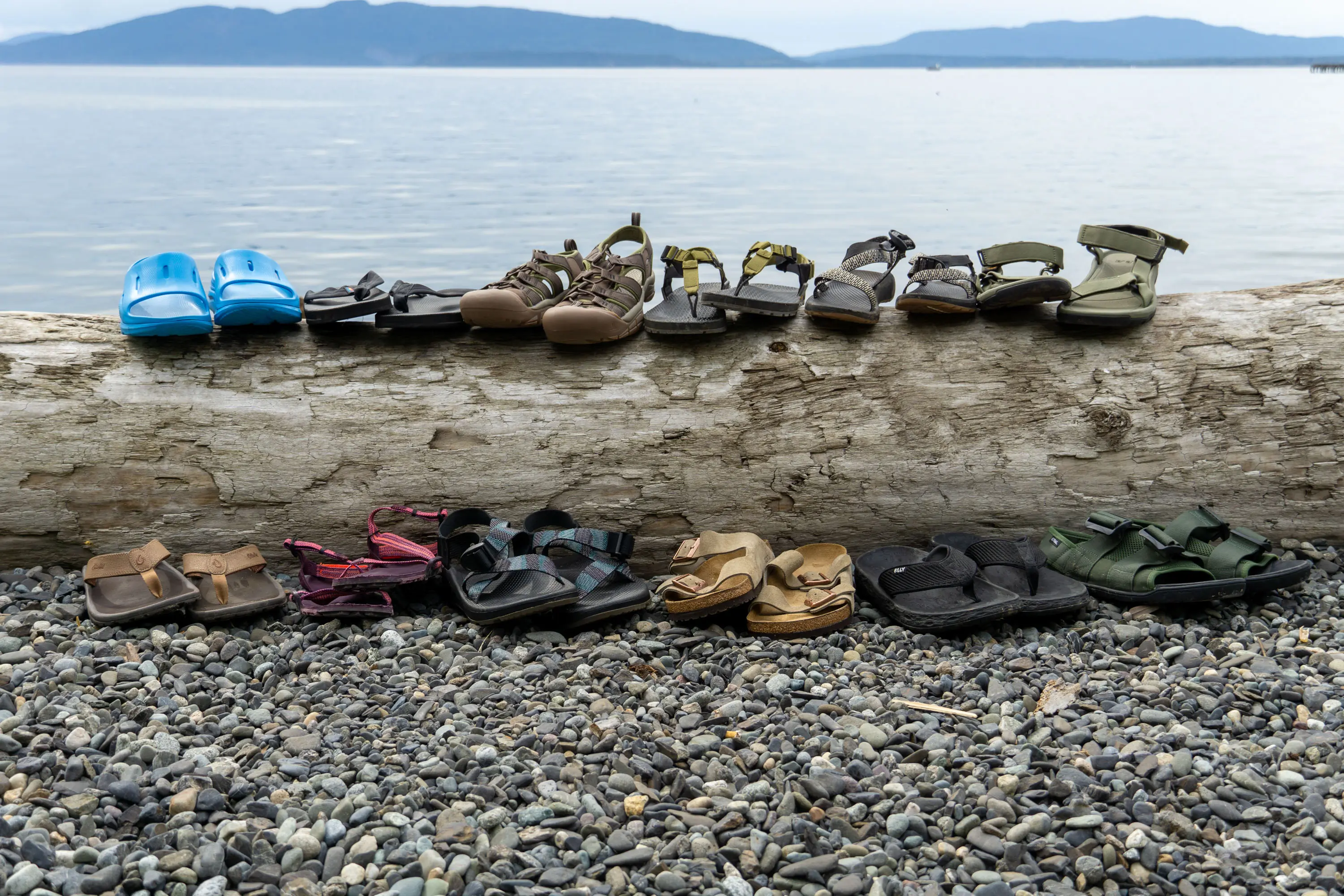
How We Tested the Best Hiking Sandals
For our updated look at the best sandals on the market in 2025, we considered a handful of new pairs and set them against our existing line-up to see if they could make the grade. Our selections came to the service of our multi-sport crew of GearJunkie comrades, as well as from good old-fashioned nose-in-the-books research.
Our Testing Process and Testing Locations




In addition to real-life use, we also subjected these kicks to a testing regiment that aimed to set them head-to-head in the arenas of traction, comfort, support, and adjustability. These tests were carried out in the creekbeds of the North Cascades, the granite slabs of British Columbia, and the rocky shores of the northern Pacific, and better quantified our thoughts on the sandals from our day-to-day testing.
And while we know that nature isn’t a runway, we also pay mind to looks as many folks enjoy taking their sandals from the trail to the taps in one go. All of this testing and feedback was also augmented by passing off sandals to our friends and family for quick feedback, who clock in at anything from size 6 to size 12, and pulled together to bring you the best of the best in sandals today.
Our hiking sandal testing extends to the hard data, as well, where we break out the trusty kitchen scale and compare these sandals against their claimed weights. And, since sizing information isn’t accurate unless you have a solid benchmark, all of our testers are sized up on a Brannock device to ensure our size recommendations are accurate.
Our Expert Testers
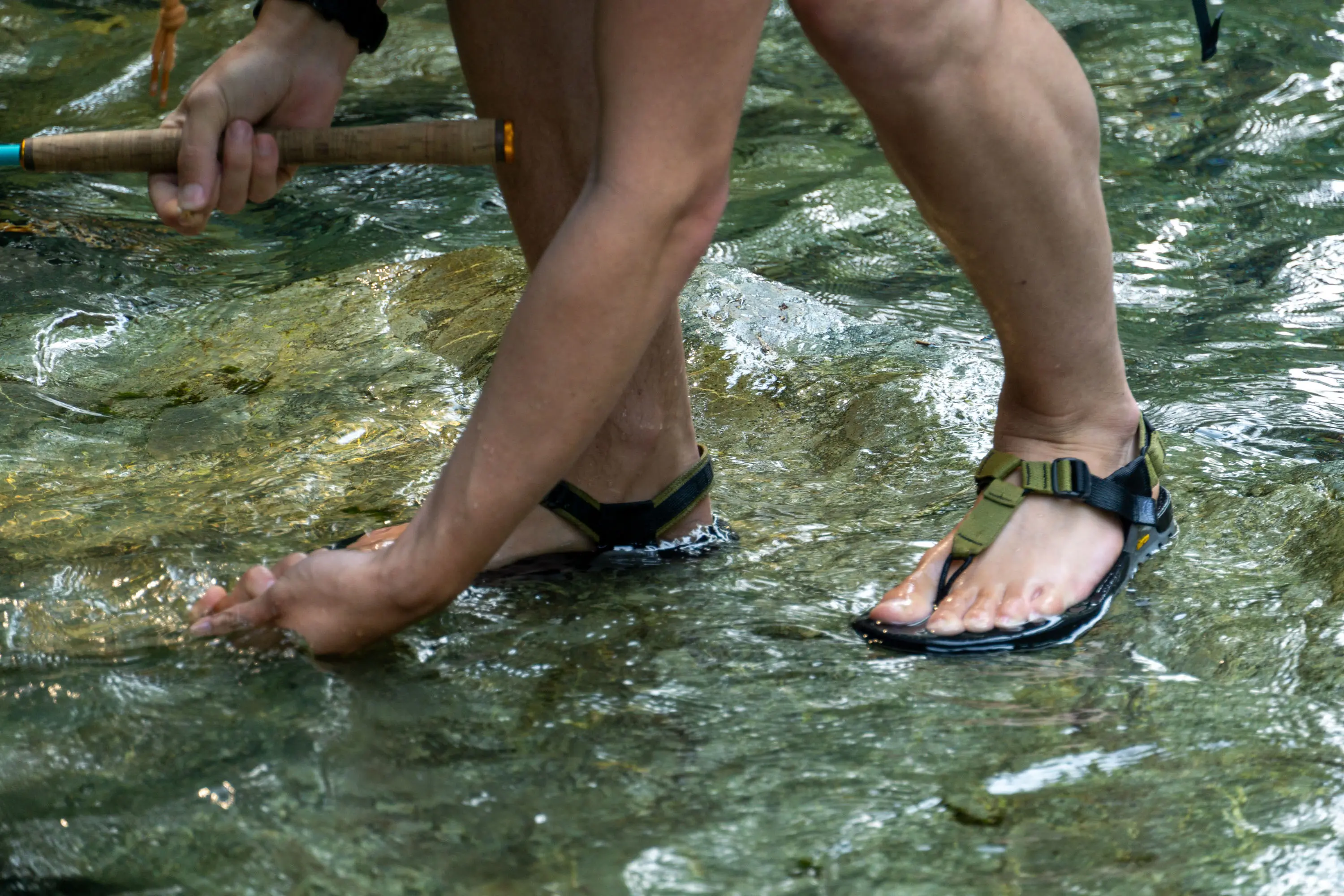



Lead tester and Senior Editor Nick Belcaster is no stranger to a little time up on his feet, having hiked a long portion of the Pacific Crest Trail in 2018. He’s well aware of the benefit of some natural foot splay and kicks around in sandals daily like it’s going out of style. Belcaster devised the testing regimen for this guide, and totes these sandals along with him as he packrafts, climbs, and surfs Washington State.
Pacific Northwest-based contributor Rebecca Ross did the heavy lifting in adding a female perspective to our testing, and is a multi-sport athlete who leveraged her broad range of skills to tackle the alpine approach to Mt. Baker, paddled stand-up paddleboards in the Columbia River, and hit the shoreline — all in her sandals.
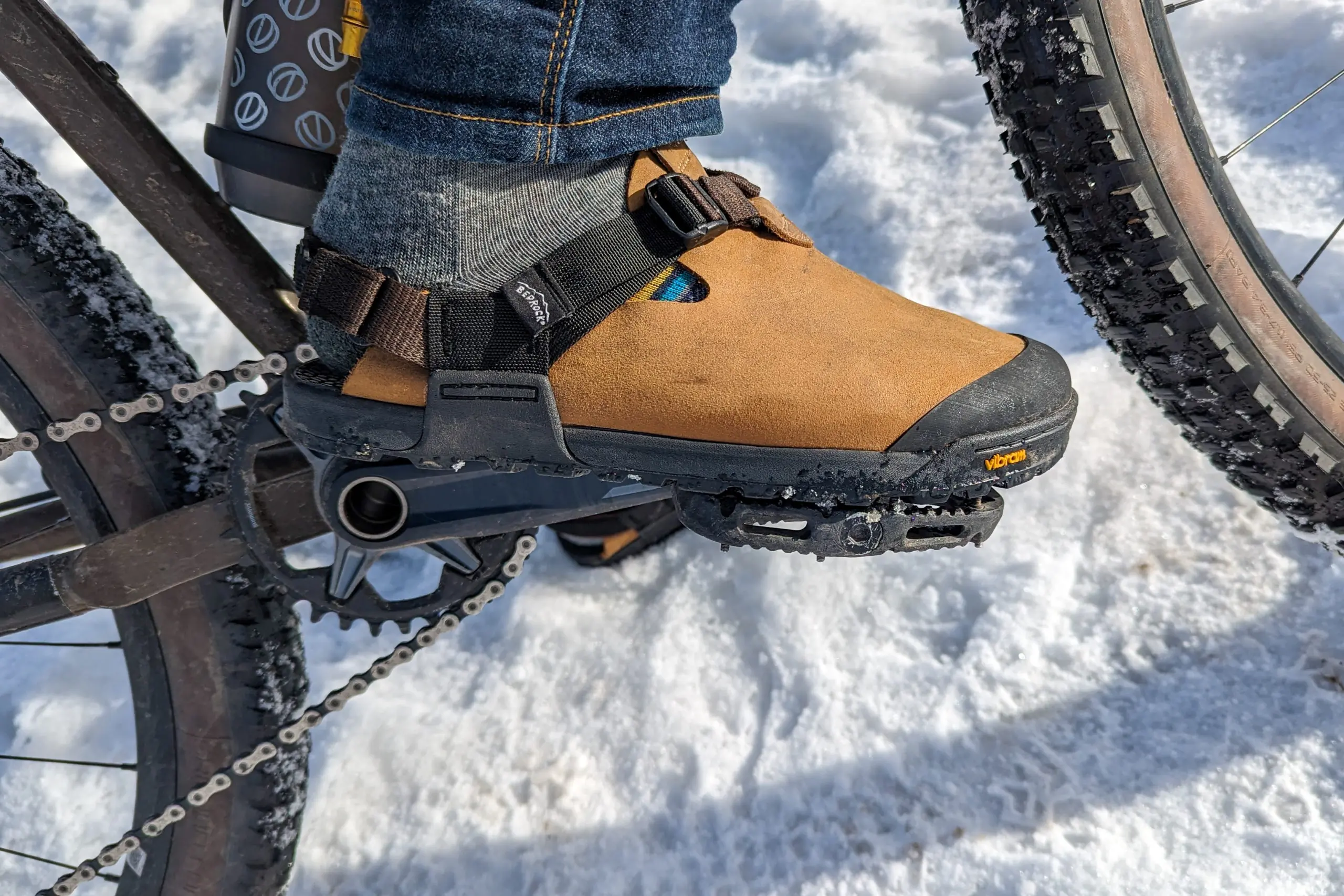



Buyer’s Guide: How to Choose the Best Hiking Sandal
A good pair of sandals should provide added levity to your day — not bog you down, and neither should your decisions surrounding sandals. People have been plodding around in lightweight footwear for some thousands of years (the oldest known examples were unearthed from Fort Rock Cave in Oregon, and woven from 10,000-year-old sagebrush bark), and they don’t look to be stopping anytime soon.
Sandals provide protection from the ground below you, and are affixed with a series of straps, which can vary from the simple to the extravagant. Sandals also provide for a much more breathable experience for your foot, and keep your feet cool on hot summer days. Consider them the perfect way to drop the top on your tootsies when the sun is shining.
We’ll note here that sandals have often existed as accessory or secondary footwear, but new strap tech and outsole constructions are churning out sandals that can keep up with the best trail wear out there. Adventure-ready sandals are taking the market by storm, and it’s now easy to have a pair for every occasion — from the casual to the rowdy.
For hiking sandals for gals, check out our Best Hiking Sandals for Women Buyer’s Guide, and if you’re interested in something that will keep your feet fresh for an entire backpacking trip, consider our Best Hiking Boots. Something between the two is more your speed? Our Best Trail Runners selections won’t have you on the wrong foot.
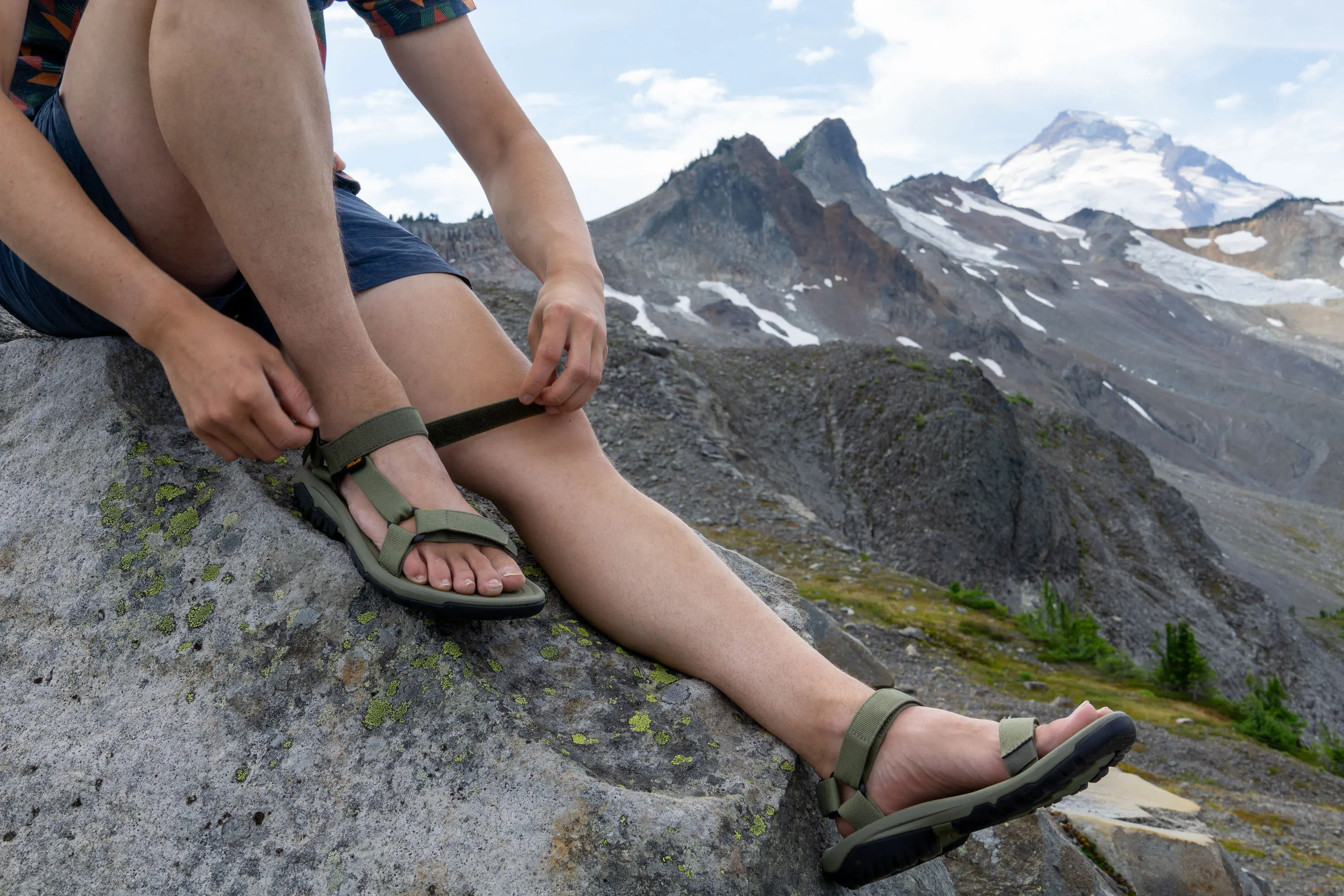



Use Types
Sandals might be firmly planted in the casual section of your footwear store of choice, but we’ve found that we can get up to some downright gnarly days in ours. That’s why narrowing in on exactly what you’ll be doing in your sandals should guide your choice. Sandals can be incredibly adaptable to different activities, but most fall into one of the following general types.
Adventure Sandals
No need to break out the big guns for this romp? Adventure sandals are more than up to the task of getting you down the trail and are designed to offer high traction, control, and comfort over a number of miles. All that will often come at a weight ding, but even still, the heaviest hiking sandals are often leaps and bounds lighter than hiking boots.
Being able to steer yourself down the trail deftly will be an important trait to look out for, so pay close attention to how the sandal straps attach to the sole, as well as how they are adjusted. Sandals with multiple adjustment points, like the Bedrock Cairn 3D Pro, will easily trump those with singular cinches, and help avoid odd rub points when the miles start to stack up. And for the barefoot loyal, the Xero H-Trail or Shamma Elite Alphas offer a low-profile hiker style that is perfect as camp shoes.
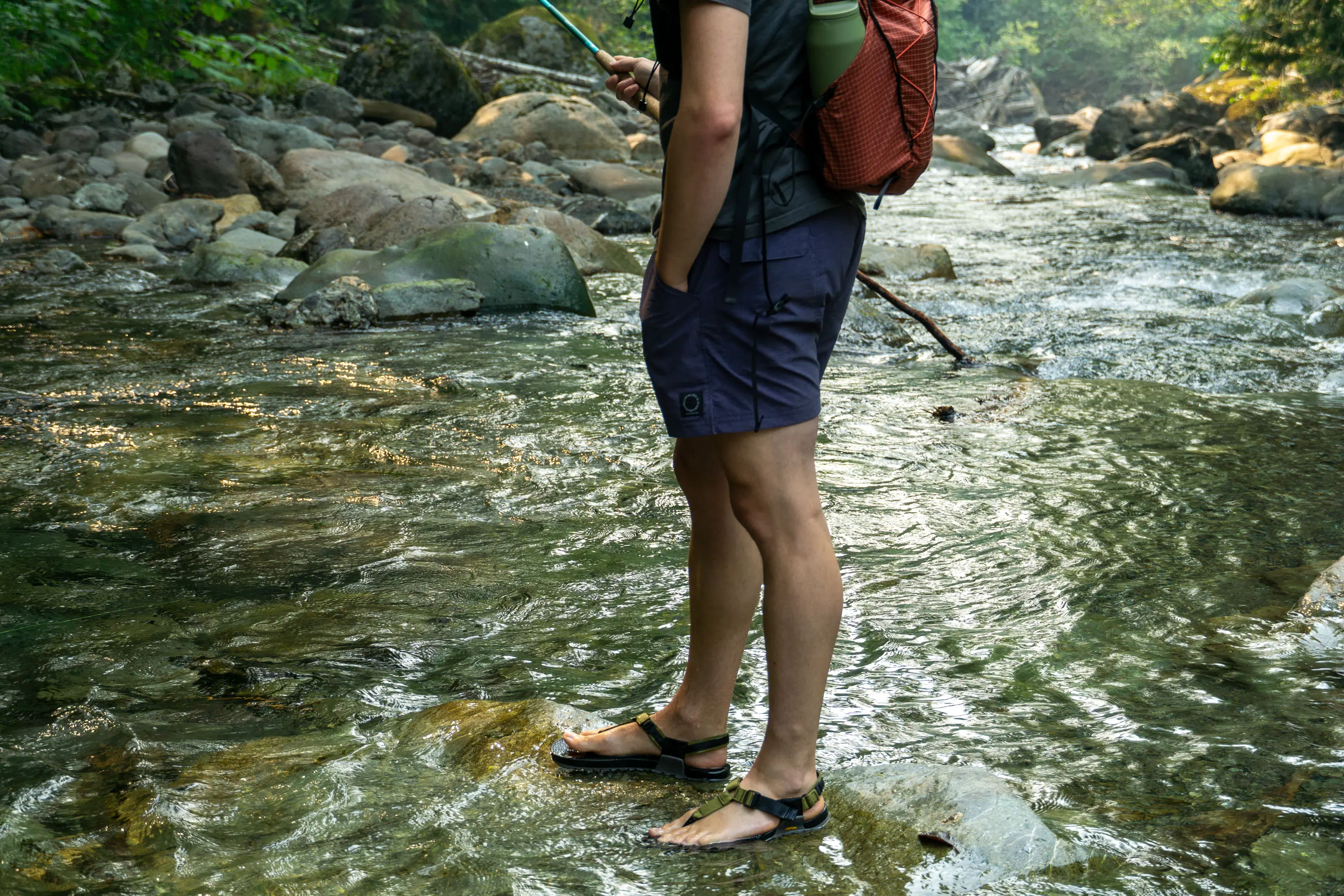



Lifestyle Sandals
Do it all, and do it well — these all-arounder sandals are just as comfortable kicking around town as they are tromping up a trail, and offer the most balance of any sandal type out there. A generous midsole should provide a good amount of comfort underfoot, and be laced up with a secure strap system that doesn’t pinch or rub in odd ways. These midsoles can often be contoured to better support your arches, and feature traction patterns to keep your foot in place atop them.
Sandals of this stripe also will sport an outsole that can handle being piloted across all different types of terrain — from concrete to slickrock — and feature a flex that lands about mid-range between stiff and floppy. This flex also has a good bit to do with comfort and traction, so consider matching your sandals with the flex of your everyday footwear.
The Chaco Z/Cloud ticks all of these boxes and more with a one-strap adjustment system and extra-comfortable footbed. And if on-the-fly adjustment is what you’re after, the Teva Hurricane XLT2 makes it happen with ease.
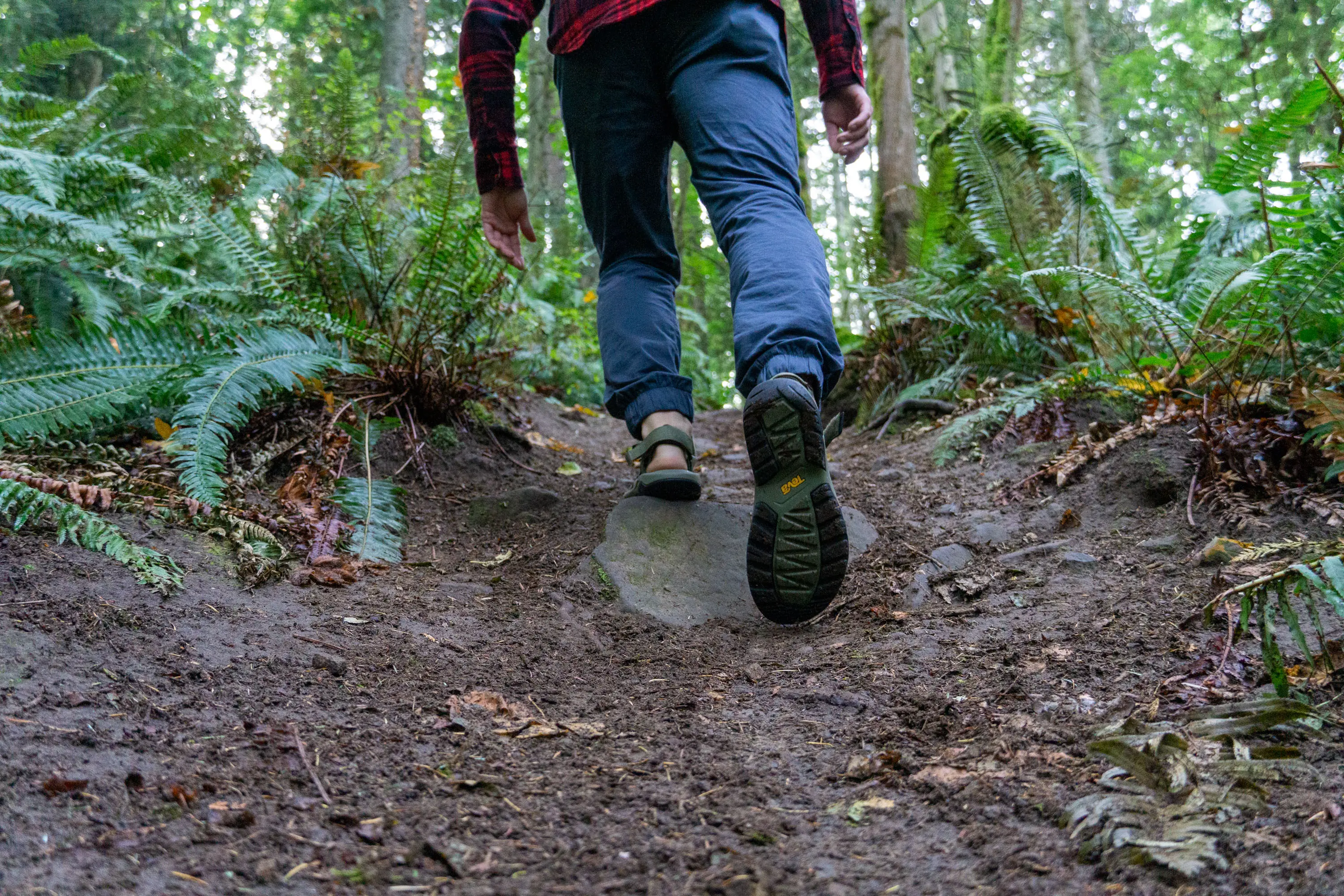



Watersport Sandals
Being able to transit from the dry to the wet and back again is a huge benefit of sandals, and those made for it leverage a few key aspects to make it happen. Watersport sandals will very often sport the best rubbers and outsole designs over their dry-land cousins, with Vibram designs reigning here. Smart lug design will also help you keep the rubber side down.
For days where we’ll be piloting watercraft, it’s hard to deny the abilities and grip of the Astral PFD, which incorporates siped rubber into its outsole to stick to slick rocks like fly paper. And for more casual splashing about or wet-wading for trout, the Keen Newport H2 is a very protective design that’ll keep your toes intact — even when swimming in murky waters.
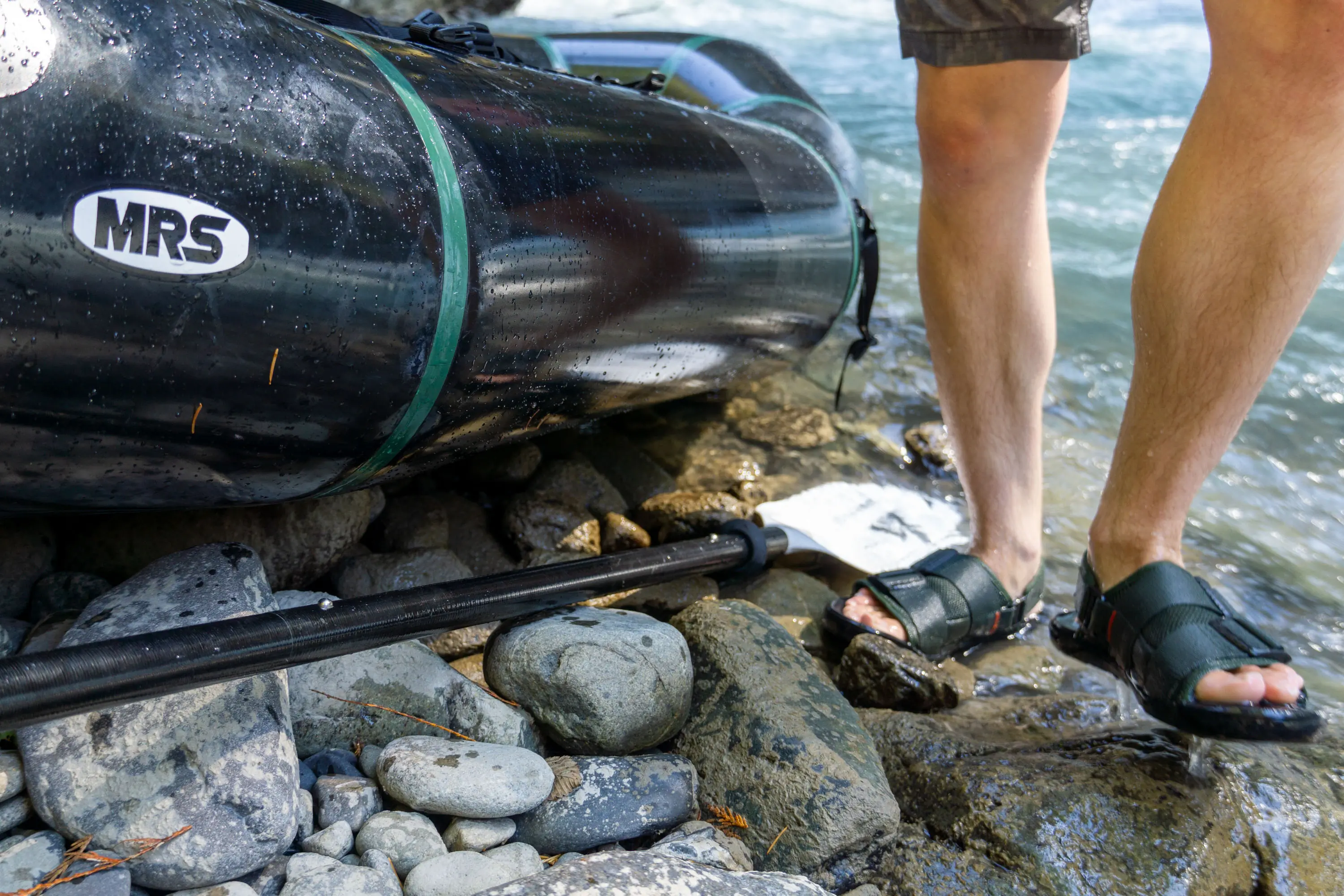



Flip Flops
Whether you call them flip flops, thongs, jandals, plakkies, or chanclas, there’s no denying the ease of slapping on some of these stripped-down sandals for easy cruising and hitting the beach. You’d be forgiven for believing that flip flops are bottom-of-the-barrel footwear, but know now that modern flip flops are available to tackle almost all of it.
The sole of the flip flop is where the magic happens, which is a good thing, as there’s not much else going on. These can be of a few different flavors, with simple flat footbeds dominating the budget side, to drop-in and contoured plush options like the Astral Filipe & Rosa that mold to your feet.
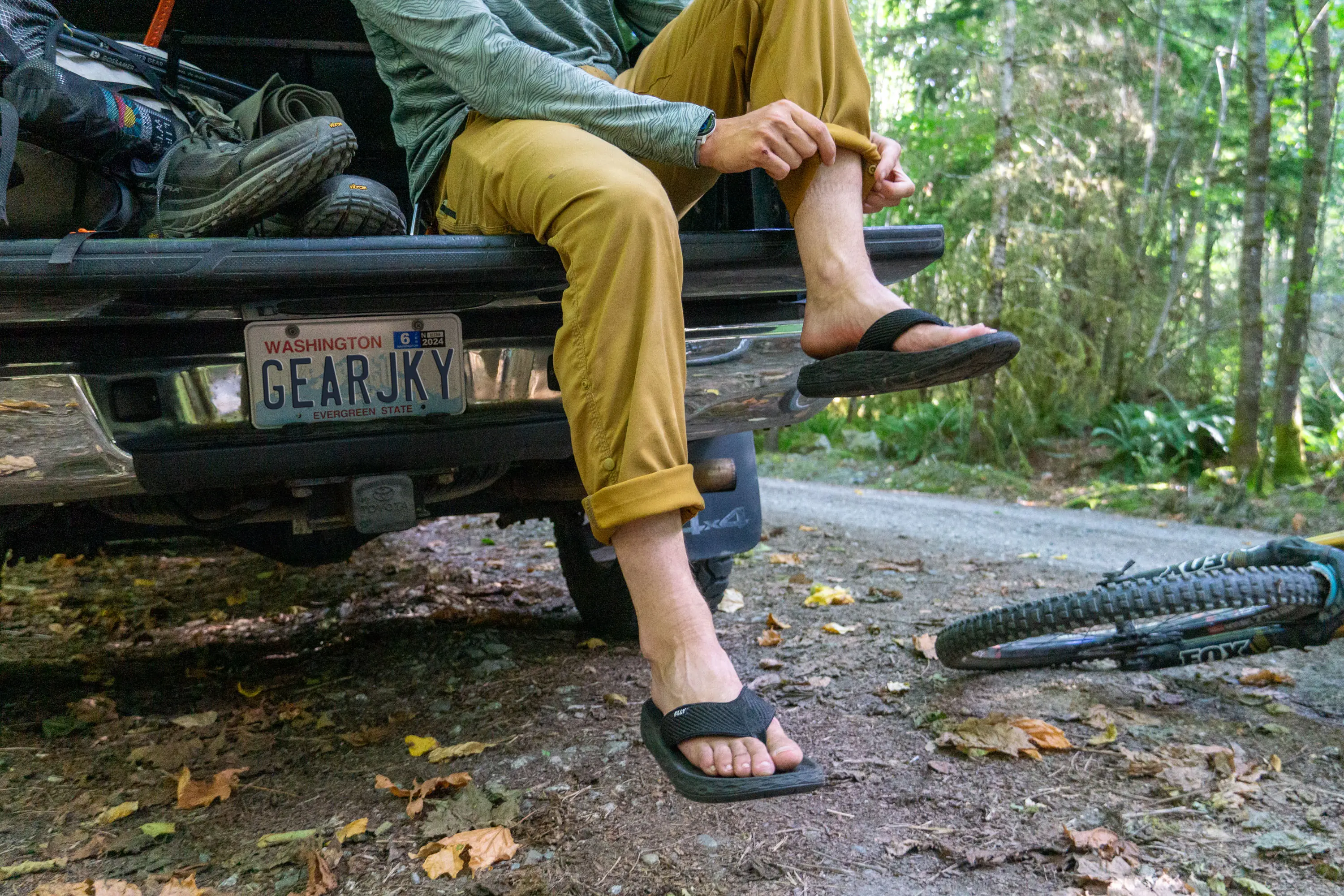



Closure Configuration
A sandal ain’t much if it can’t stay on your foot, and affixing your sandals properly will have a huge impact on not only your comfort but also your ability to traverse more difficult terrain.
Some measure comfort and a quick on-and-off over all else, while others put a premium on adjustability and honing in on the perfect fit. Others still exist somewhere in the middle, with easy hook and loop closures that will both stand up over time and allow for good control. Wherever you end up landing, know that everyone has a different foot, and that some strap styles may work better than others for you.
Straps (Buckle and Velcro)
The old standby: You typically won’t need to fully ensconce your foot in a thicket of webbing to get them to stay on, but a good two or three strap system will keep your kicks where you want them, and transfer control when you need it. These straps typically lie over the top of the instep, as well as over the front of the foot, and behind the ankle.
Adjusting these straps can be accomplished through a few different means, with buckles and Velcro being the primary among them. A good buckle adjustment will offer fine control over cinching up exactly how much room you want, and won’t wilt in water and become too dirty to work. Velcro, on the other hand, is super quick and easy to manipulate but will have a lifespan to its hold, and can become less effective when packed with trail debris.
Consider also how these straps anchor themselves to the sandal body. This area can often be a rub zone for folks with particular feet, and you may need to experiment with different strap styles to find one that works for you. The anchors on the Xero H-Trail Sandals are canted away from the foot to allow for a more natural foot splay. Also, know that new webbing will eventually wear in and become more supple, so a good fit may only be a few days away.




Bungee Closures
Utilizing the natural stretch and rebound of elastic cord to hold your foot to a sandal is an excellent way to stay connected. Closures like the one on the Keen Newport H2 provide a more connected feel that is similar to a shoe, but still retains all of the breathability and water-friendly nature of sandals.
Like any natural rubber, elastic will have a functional life that will end with less rebound as time goes on. Thankfully, many bungee closure sandals can be replaced at home with fresh cord. And while Keen is undeniably the king of the elastic cinch, there are also a number of Merrell sandals that utilize elastic as well to keep your foot locked down.




T-Style Straps
A bit of a flip flop and strap-style hybrid, T-style straps pad between your big and second toes, as well as securing your instep and around your ankle. These straps provide your feet with some of the most wiggle room of any strap style, while still providing enough control to pilot your feet where you need them.
Sandals of this strap flavor are also some of the most adjustable (Bedrock even has full videos on the multi-step process), and each section of strap can be dialed in to specifically fit your feet. With the single strap going in between your toes, it can be a little bit of an adjustment period, but after a few days the webbing and cordage supple up and wear into your feet.
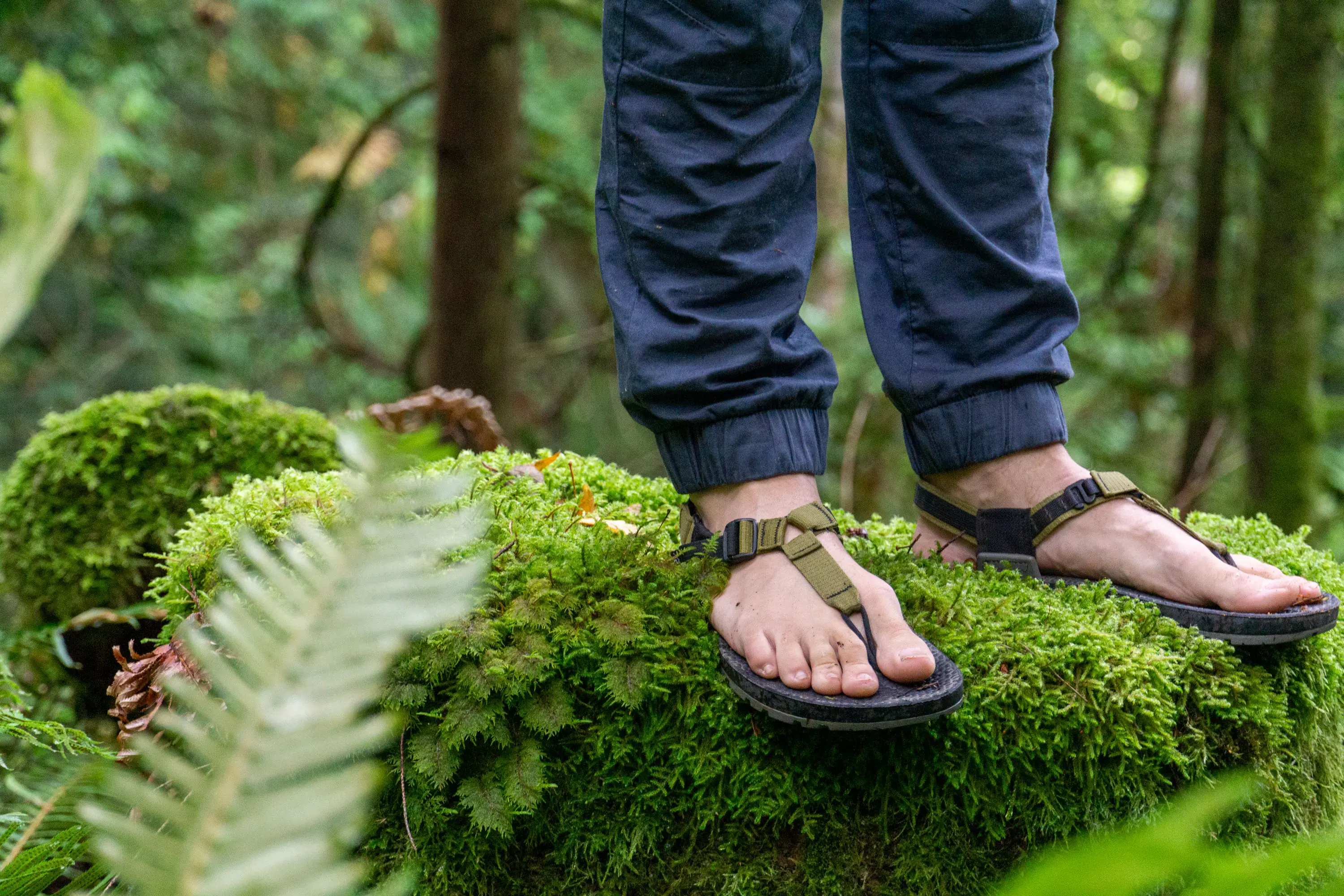



Floating Straps
A bit of a spur on the strap design, but certainly novel in its application, floating straps utilize a single piece of webbing that is fed through the sole of the sandal, and is adjusted by milking slack through it until all areas of the strap are snug. Chaco is famous for this strap style, and it very often can be love at first sight, or a prompt ‘no, thank you’ when it comes to these straps.
To adjust floating straps, begin at the end of the sandal and loosen the strap throughout the sandal. Then, tighten the straps beginning with the toe loop (if the sandal has one), and move on to the front of foot strap, and then back to the ankle/buckle adjuster strap. Your straps should feel snug enough to keep your foot secure, but not so tight that you struggle to slide into them.




Fit and Sizing
Because sandals aren’t limited by being fully enclosed, the fit is generally a good bit easier to nail down versus everyday footwear. Still, there are a number of things to consider in finding your Cinderella pair.
For one, sandals generally play by the same rules when compared to like-size footwear when sizing, but this isn’t always the case. Almost all brands of footwear vary somewhat in their interpretation of sizing, and this also extends to sandal brands.
While compiling sandals for this guide, we leaned on manufacturer suggestions of whether to size up, down, or stick with our common size. Some sandals, like the Bedrock Cairn Evo 3D Pro, should generally be sized up one full size, while others might need to be sized down.
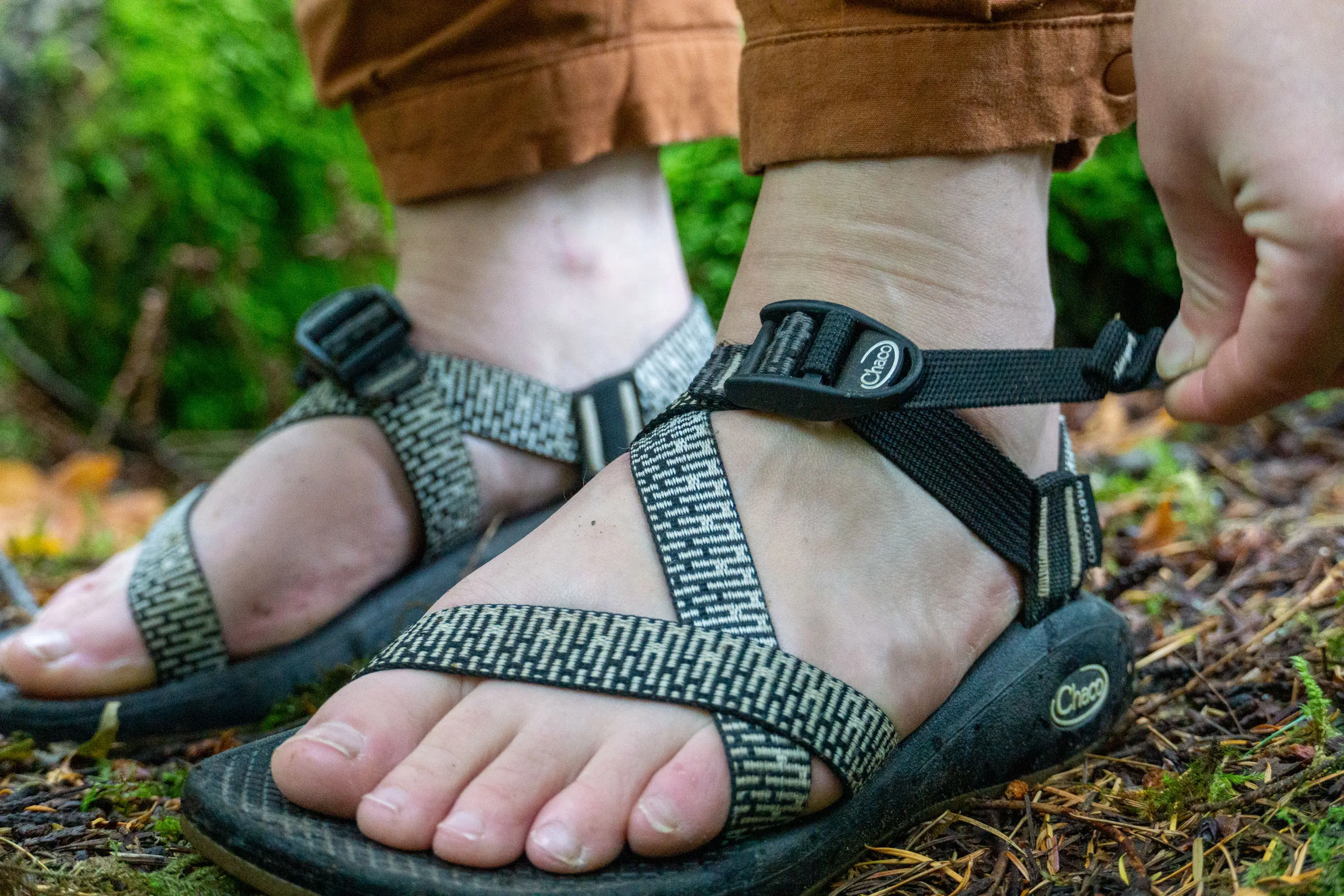



We’ve found that most sandals won’t be offered in half sizes, so when in doubt: size up. Your unblemished toes will thank you. The difference in Men’s and Women’s fit sandals almost always only relays a difference in width, with Women’s sandals being the thinner of the two.
There’s no rule regarding who can wear what sandal, and if you’ve got a narrower or wider foot than normal, look further abroad for other gendered options that will best fit your foot. Both Chaco and Teva are good at offering fairly gender-neutral colorways in both styles.
Fit also has a good bit to do with the strap system, which fastens down over the instep and front of foot in most sandals. Due to differences in feet, sometimes certain straps won’t play nice with your feet. For example, the lead tester of this review has some of the most low-volume feet this side of the Mississippi, and struggles often to cinch down sandals fully to get a truly snug fit. This is especially important to consider in all-in-one strap systems like the one used in Chaco sandals, where extraneous straps can quickly become a tag end to trip on.
You’ll have no ability to run custom insoles in sandals, and if you’re a person with particular feet, you may want to match up your sandals with the arch profile of your everyday insole. Sandals like the Chaco Z/Cloud and Teva Hurricane XLT2 had some of the highest arch profiles in our testing, while the Bedrock Cairn Evo 3D Pros landed at about the middle of the pack, and sandals like the Xero H-Trail or Teva Original Universal lacking much structure at all.
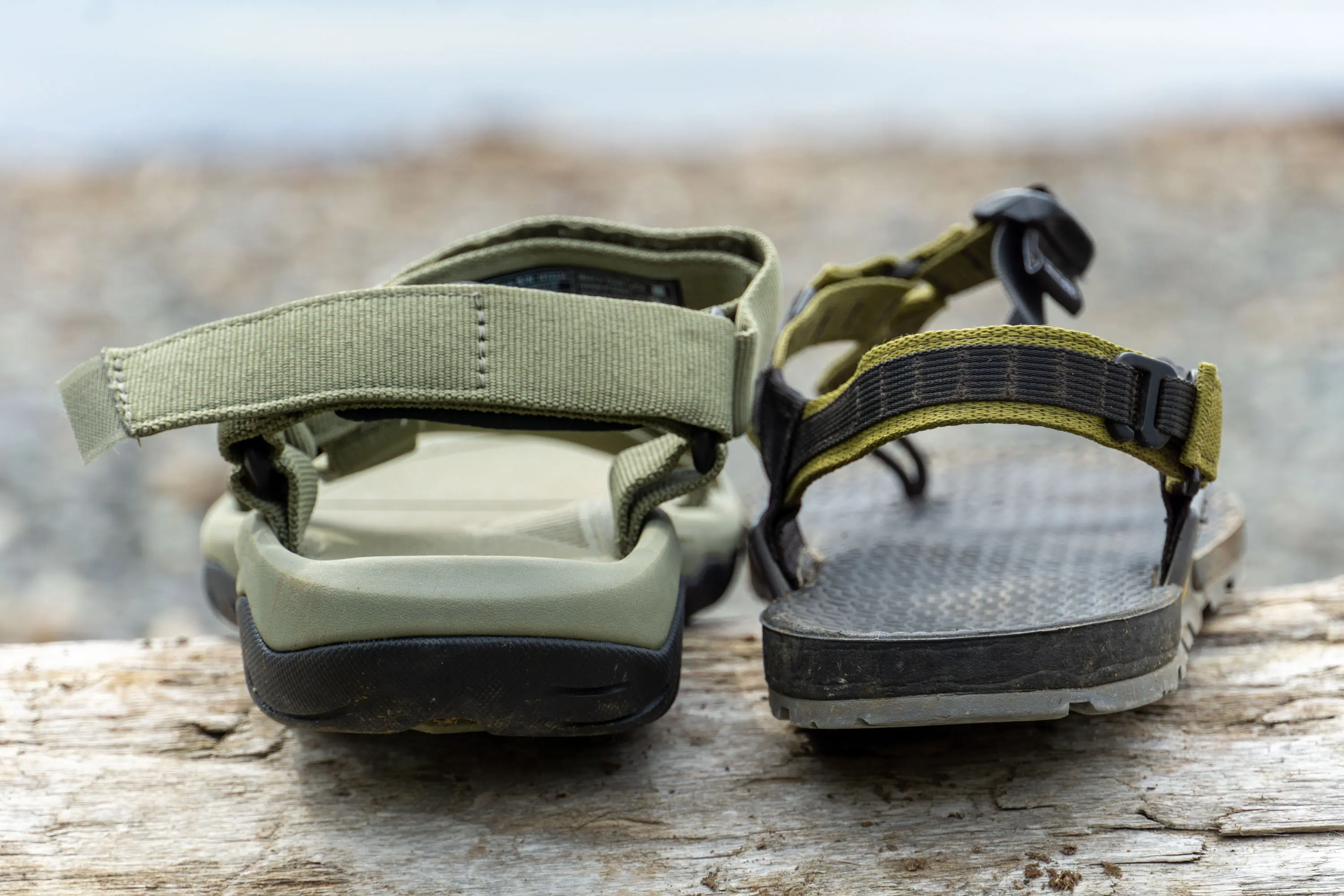



Weight and Packability
The old adage of a pound on your feet equalling five on your back rings true here, and luckily with how lightweight sandals can be, you should be practically floating down the trail toward camp. Most sandals will end up weighing just shy of the 1-pound mark per pair, with some, like the Xero Z-Trail EV, skirting under at an impressive 8.6 ounces.
Overall weight can be important when considering whether or not you’re willing to bring your sandals along as a luxury item while backpacking. Lightweight and ultralight weight sandals like the XEROs will easily make the cut, and some with a bit more structure like the Luna Mono Winged Sandals should also be considered.
With added weight very often comes added durability, and sandals like the Chaco Z/Cloud and Teva Hurricane XLT2 offer chunky soles that boost comfort, but at a bit of a ding to weight. We tend to grab these sandals more for everyday wear when we won’t be packing them along.
In practice, we tend to gravitate toward a middle-of-the-road weight and packability sandal, like the Bedrocks. At 17.4 ounces they’re not going to drag you under, and the minimal strap system collapses well into itself to form a tight package for toting around.
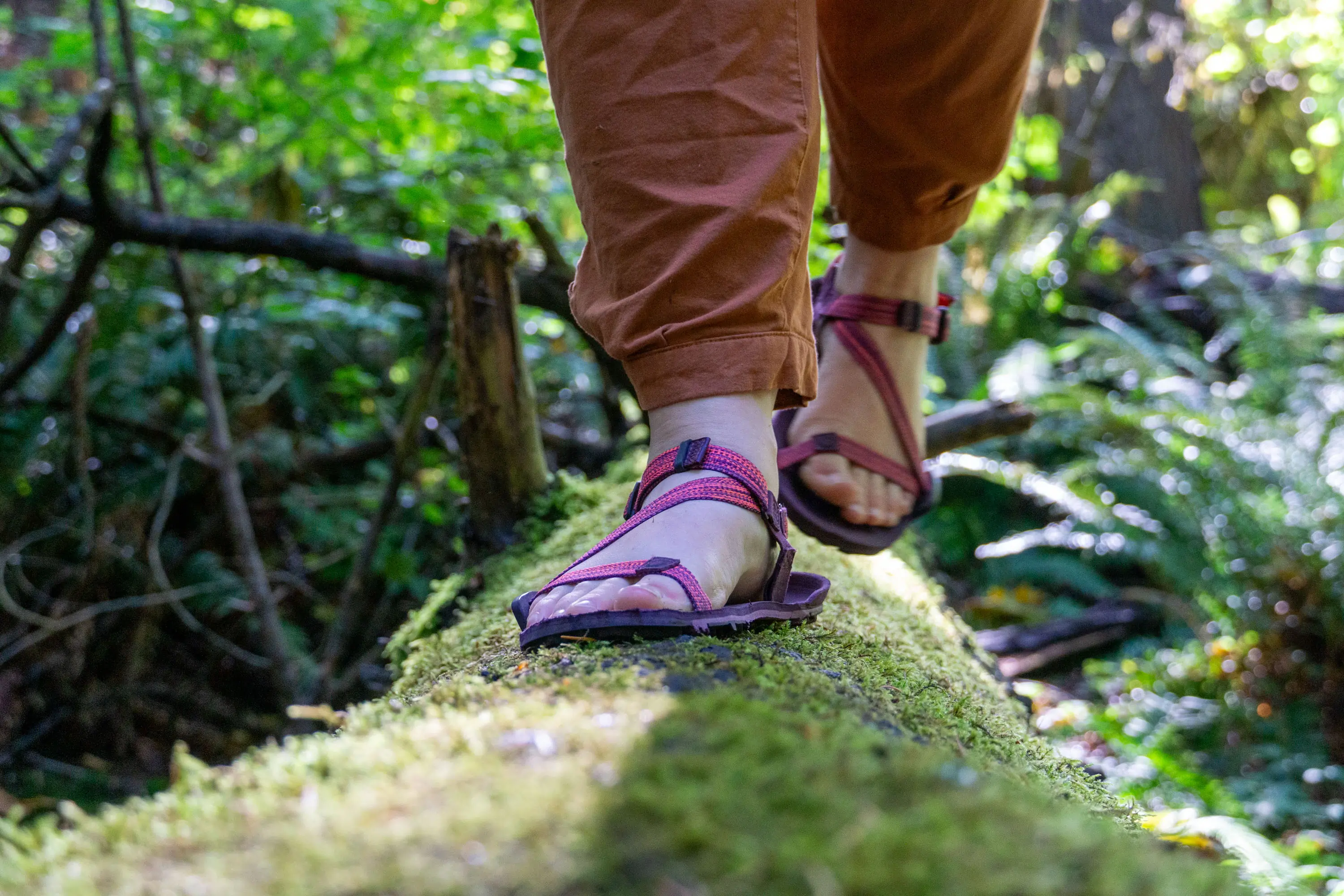



Outsoles
This is where the rubber meets the road with sandals. Like conventional trail wear, sandals very often incorporate a thick and grippy outsole that protects against rough terrain, and choosing one with a rugged outsole should be high on your list if you are angling to take them off-road.
Let’s start with the lugs. These hunks of rubber protrude from the bottom of the sandal and provide the grip you’ll need for rambling around on granite boulders or in sandy washes. Multi-directional lugs are placed in alternating directions to provide better grip on both the uphill and the downhill, and most any hiking sandal worth its salt will incorporate them.
The type of rubber also plays a big role in grip, with softer rubbers sticking much better, but having a shorter lifespan in the long run. Sandals laid up with the most premium outsoles often opt for Vibram brand rubbers and lug design, which are proven to be trail-ready and stand up to the test of time. This isn’t to say that proprietary rubbers like ChacoGrip or Teva Durabrasion can’t hack it (they certainly can), but we know we can trust Vibram straight out of the box.
Certain sandals meant for water use, like the Astral PFD or Keen Newport H2, razor sipe their outsoles to add an extra layer of grip in wet conditions. These small cuts act like teeth to bite into slick surfaces, and displace the wet directly beneath them to get good contact.
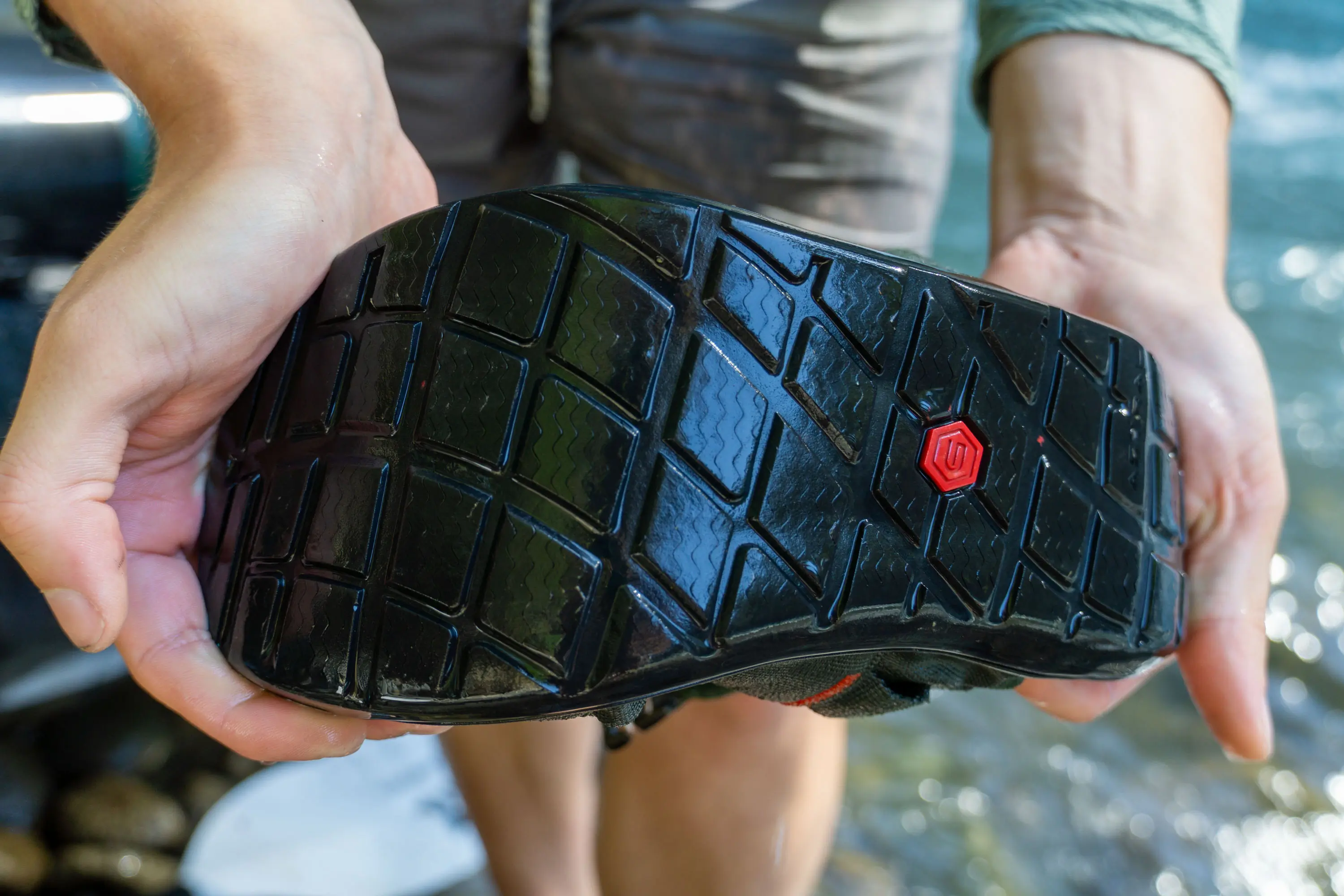



The stiffness of the outsole will also play a role in traction and control, as a floppy sandal won’t respond well to the actions of your feet. During testing, it was interesting to note that the Teva Hurricane XLT2 had a slight edge on the competition due to the nylon shank that is embedded in its outsole.
Like running or trail shoes, sandals may also incorporate a toe-to-heel drop across the outsole for better ergonomics. If you’re a runner, you likely know what amount (if any) of drop you like in your footwear, and matching your sandals can be a smooth transition. There isn’t any problem with wearing shoes or sandals of different drops, but you may notice it in your ankles over a full day.
Finally, the stack height of a sandal has to do with the total distance between the ground and the soles of your feet. A thicker outsole will provide more protection and durability, but will flex less and be a bit more clumsy in maneuvering. Thinner outsoles will be more tactile and give more ground feel, but won’t be endurance footwear (for most of us).
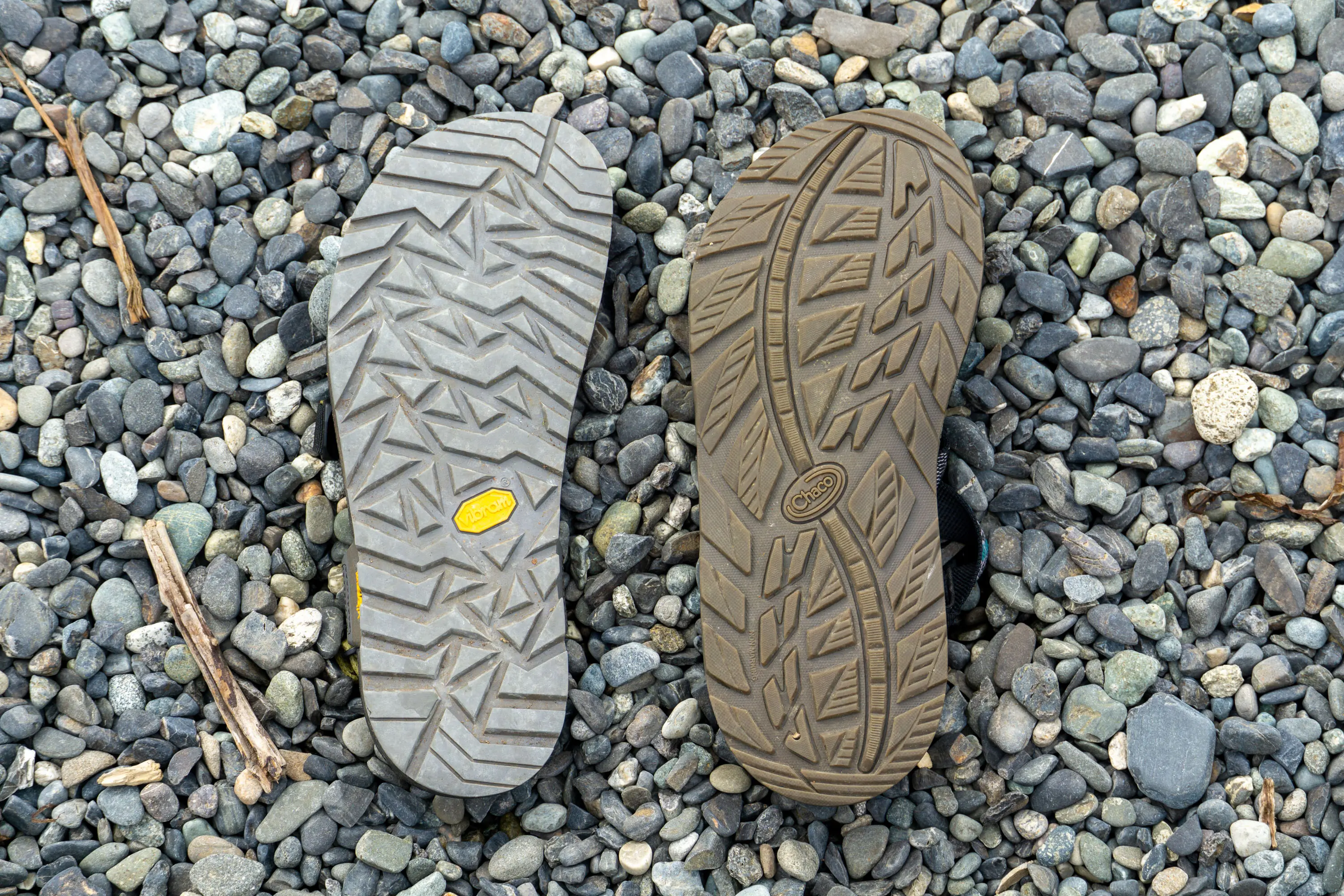



Support and Comfort
Sandals may not be your all-day-every-day shoe choice, but they still should be comfortable over the long run. Sandals comparatively don’t have much support when set beside modern hiking boots, but barefoot enthusiasts will tell you that weak feet need support, and strong feet do without. Wearing sandals consistently will very likely strengthen your feet.
Most of the support and comfort from your sandals will be courtesy of the midsole, which is the material that rides above the outsole. This material needs to toe the line between being soft enough to accommodate your feet while standing in them, but not so soft that your arches collapse over time. Because everyone has different foot profiles, you likely will want to get some test laps in any sandal you’re looking at spending considerable time in.
Comfort will also have a good bit to do with the system of straps that hold your foot to the sandal. The tops of your feet can be surprisingly sensitive, and yarding down on your sandal straps is liable to make anyone a little shy about wearing them again. Go for a snug fit that allows your foot to make the micro-adjustments it needs to while walking. Your feet will thank you.
It’s good to know too that many straps will wear in and become softer over time, so don’t fret if your initial wear yields a few rub marks. Give it a day or two and reassess.
Foot Protection
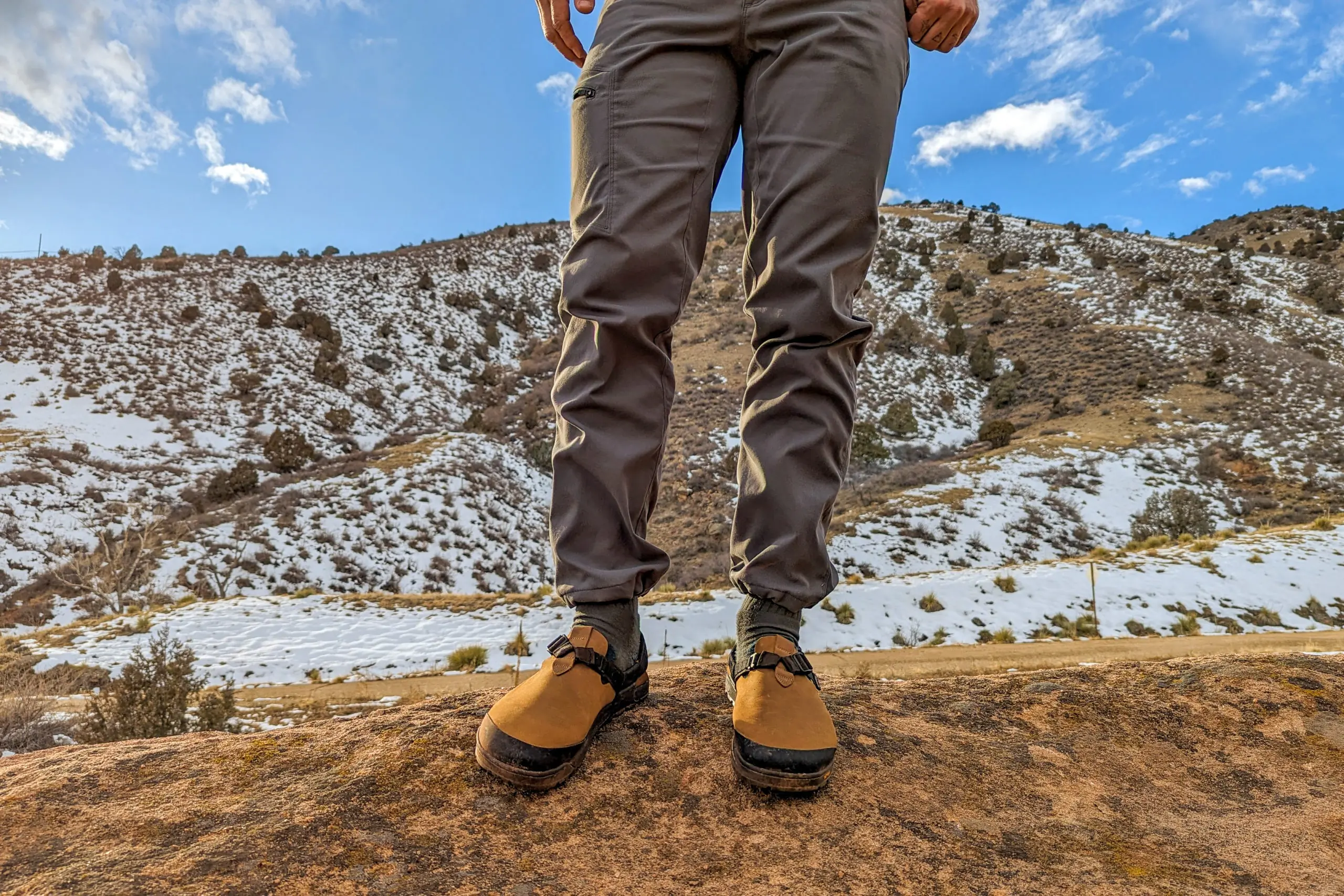



While foot protection isn’t typically something that comes to mind when thinking about sandals, there are a few that do it quite well. Take, for example, the Keen Newport H2, a sandal that even Keen calls the “World’s Ugliest Sandal”, but also one that offers up an impressive amount of foot protection in trade. The sandal was designed with sailing in mind, where a rogue cleat topside could easily find your foot unsuspecting.
Protection in sandals more often comes from below, and the outsole has an oversized role in keeping the soles of your feet unaware of the pokeys below. A thicker outsole will soak up rocks and roots with ease, so look for sandals that don’t skimp in this regard. The soles of the Bedrock, Chaco, and Teva sandals all sported burly outsoles that didn’t wilt under pressure.
Foot protection also has a good bit to do with staying affixed to your foot properly. At least once during testing we had a flip-flop go flying and gained a wicked new battle wound in the process. If adventuring is what you’ll be getting after, best to leave it to the adventure sandals.
One of the best things you can do to better protect your feet when wearing sandals is to avoid wearing them too small. Give yourself a good inch or so between your longest toes and the ends of the sandals, and errant rocks and roots will be less of a problem to catch on.
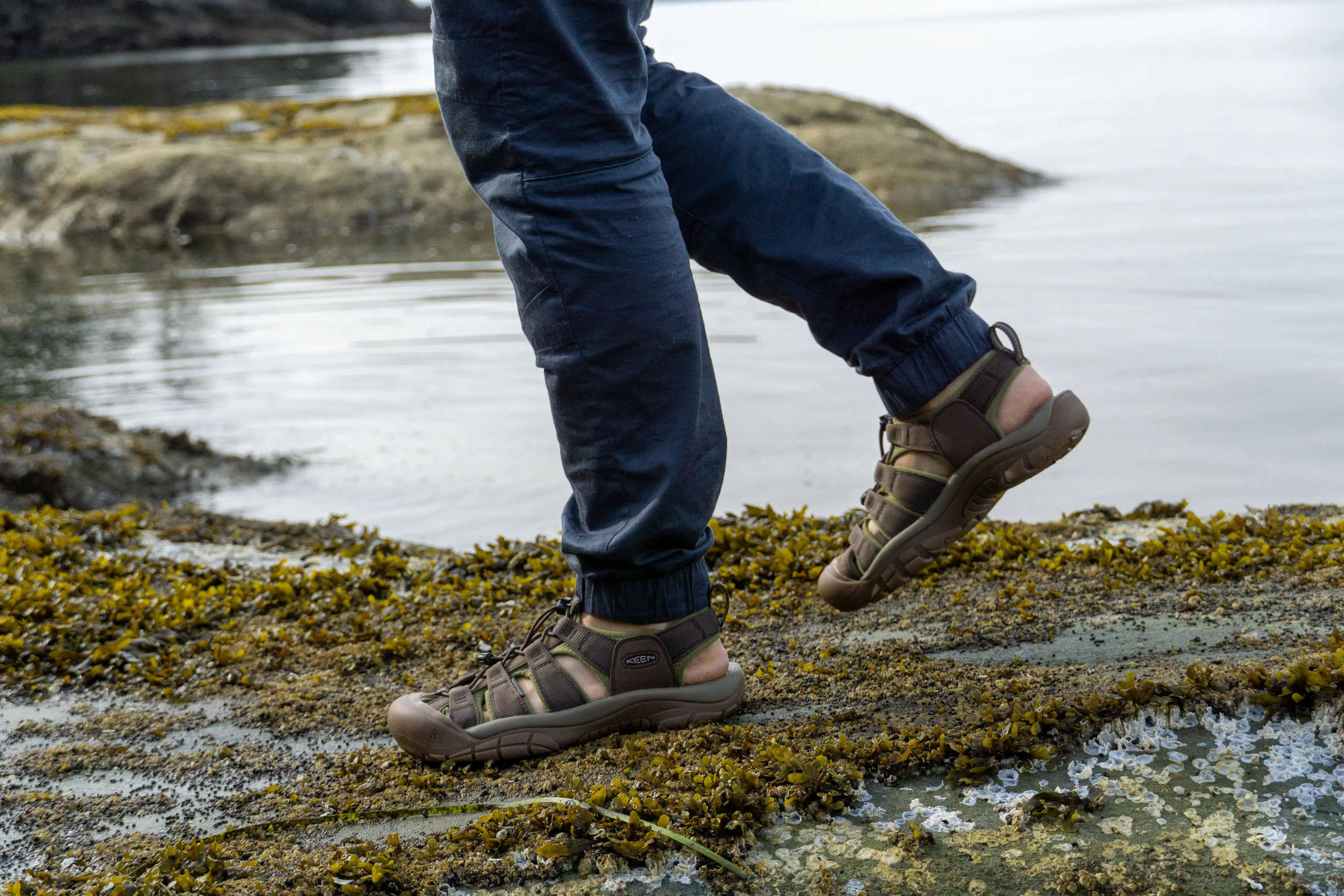



Durability
The pair of cheap flip-flops you’ve been limping around might be getting the job done, but a pair of sandals with some staying power is bound to get you much further down the trail. Overall durability is directly tied to material quality, and going with a tried-and-true brand that uses good DNA in its build will yield a longer life in the end. We have great trust in brands like Chaco, Teva, and Bedrock to supply sandals that will keep kicking.
Budget-minded sandals, like the Teva Original Universal, will have to make a few concessions to hit their price point, and oftentimes that takes a bite out of durability. The soft foam outsole is the sacrificial lamb in this case, and while the damage may be more cosmetic than anything, it is something to consider.
We’ve notched a full summer under our belts with these sandals, and we’ll continue to run them until the wheels start to fall off.
Sustainability
Your sandals won’t just be leaving footprints on the earth, and limiting the impact they have — from beginning to end — is a win-win for everyone. Starting with the build, many sandal manufacturers today have tweaked their production practices to be more earth-first. Both Chaco and Teva now utilize almost entirely recycled plastic in creating their webbing, which is sourced from recycled drink bottles, and Keen has stripped out all the PFCs from their sandal line.
When you’ve put on more miles than you can count and worn down the soles of your Bedrocks, you can send them back in to be resoled for $55. Chaco also offers a similar service with their ReChaco program, where old sandals become new again with refreshed straps, buckles, or soles.
And even when your sandal’s time has come, the story isn’t yet over, as companies like Teva have begun offering to fully recycle your old sandals so that they never see a landfill, and are turned into running tracks and playgrounds.
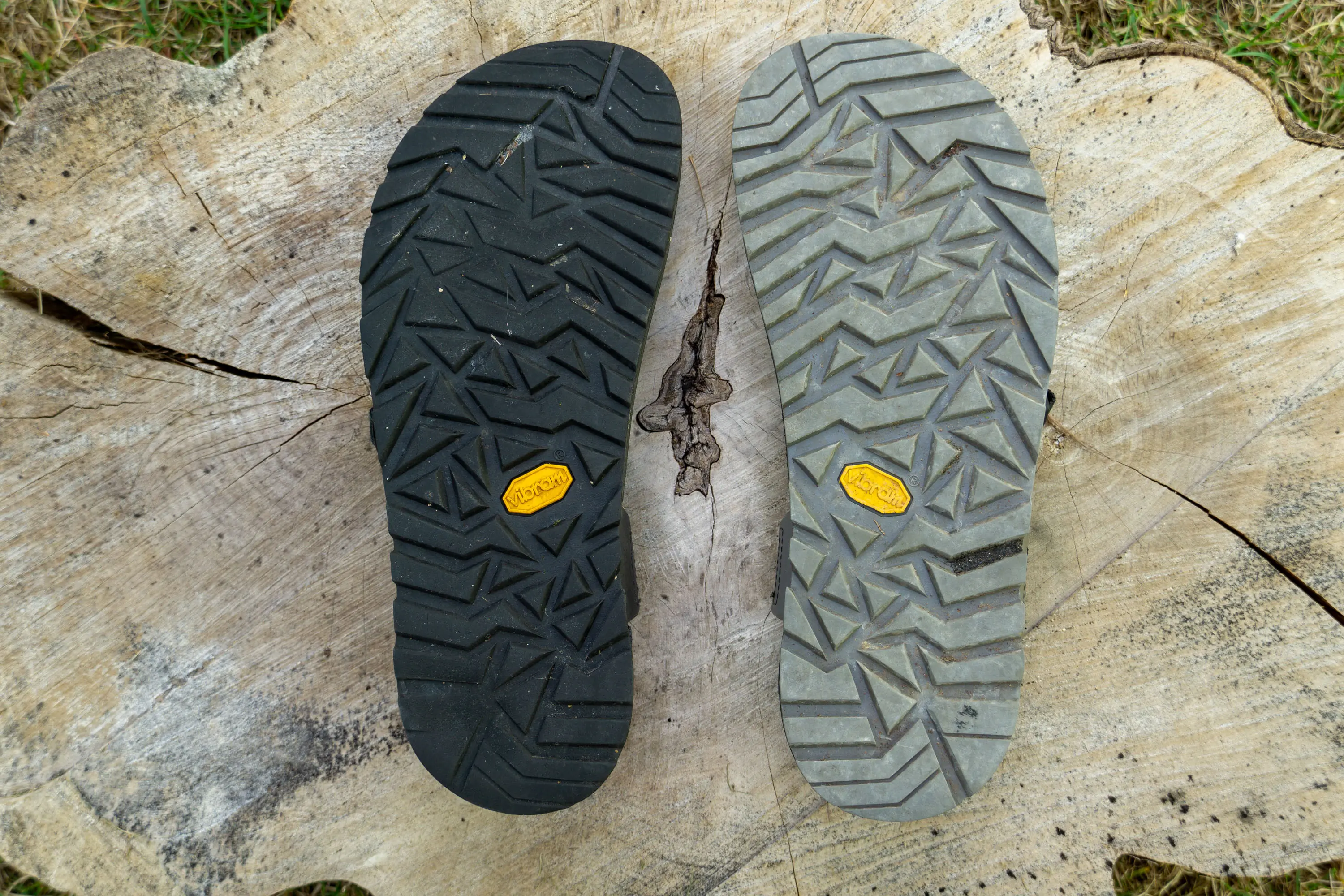



Socks
Sacrilege to some, salvation to others, wearing socks with sandals can be an excellent way to stretch your sandal-wearing season. We can’t knock the practice, as living in the Pacific Northwest offers up more middling weather days than not, and we’d urge all to fly their sock-and-sandals freak flag.
If you’re going to wear socks with sandals, consider that you’ll have a bit more foot volume to contend with, and ensure that your sandals have the adjustability to match. Because of this, more involved strap systems like the toe-loop on certain Chaco sandals might not play as nice with socks. You’ll also want to be wary of sandals that use Velcro closures, as wayward straps tend to stick to socks.
Many sandals that use a slide design will be amenable to just any old socks, while some with strap systems will require toe socks to fit. Tabi socks are traditional Japanese hosiery meant to be worn with T-strap style sandals like Zori, and we’ve come to love the Split-Toe Socks ($22) produced by Injinji and Bedrock. While traditional toe socks will also fit the bill, these only require wrestling your big toe into place and are much less fussy in our opinion.
Price & Value
A good set of hiking sandals might seem like a luxury item, but you certainly don’t have to spend luxury prices to slide into a great pair. Even if you plan on putting down some serious miles in a set, the top-tier options slide in below what most trail runners go for these days, and you can expect some similar mileage.
Budget
A solid set of budget hiking sandals will likely only cost you between $50 and $70, and net you a pair that’ll get you down the trail easily. Don’t expect to see name-brand outsole technologies like Vibram here, but rather proprietary rubbers laid out in simple traction patterns that will get the job done.
Strap systems, too, may be a little more limited in adjustability, such as the two-way adjustable Teva Original Universals ($55) or Chaco Lowdown ($70). Bumping up a bit more to the $75 Teva Hurricane XLT2 will get you that third heel adjustment strap.
Mid-Tier
The bulk of your hiking sandals will land in the mid-tier price range, which you should expect to pay around $70-100 for. Here, you’ll still see proprietary rubbers used in outsoles, but they’ll be of the tackier variety and laid out in better traction patterns. For example, the Chaco Z/Cloud sandals use the same ChacoGrip rubber as the cheaper Lowdowns, but in a much grippier pattern.
Adjustability, too, will get better, with three and four-zone adjustable straps being common, as well as incorporating better quality buckles and webbing. The Luna Mono Winged Sandals ($110) are an excellent option for long days in the saddle with five-point adjustability and Vibram outsoles, while the Astral PFD Sandals ($95) offer a sport-specific style for water sports.
Premium
If you’re planning on hiking hiking in your sandals, it’s likely worth it to spend a bit more for a style that can hang with hundreds of miles of use. Anything north of $100 is likely to fit the bill, and will make use of the brand’s highest-quality outsoles, as well as added padding to increase comfort.
The additional padding on the Teva Terra Fi 5 Universal sandals ($110) is about the only difference between these sandals and the Hurricane XLT2s, but for extended use it can be well worth it. Our best overall pick, the Bedrock Cairn Evo 3D Pros ($140), is just about the nicest sandal the brand makes, and it’s got the pedigree to prove it. We’ve seen pairs of these sandals put down entire thru hikes and ask for more.
Frequently Asked Questions
No two feet are the same (even on the same person!), which means that the most comfortable sandal will very likely depend on your foot shape, gait, and the types of adventures you like to get up to.
With that being said, here are a few highlights to be on the lookout for: Most comfort in a sandal will come courtesy of the midsole, which rides above the outsole. This should provide a nice amount of give when standing atop, but not collapse with just body weight.
Comfortable sandals will also use a strap system that plays nicely with your feet. Multi-adjustable options, like those seen on the Bedrock Cairn Evo 3D Pro, allow you to tune in specifically to your foot shape.
Finally, aim for a sandal that is made for the long run, and won’t degrade too quickly. Quality materials make for a consistent fit, and that means your perfect sandals won’t go changing.
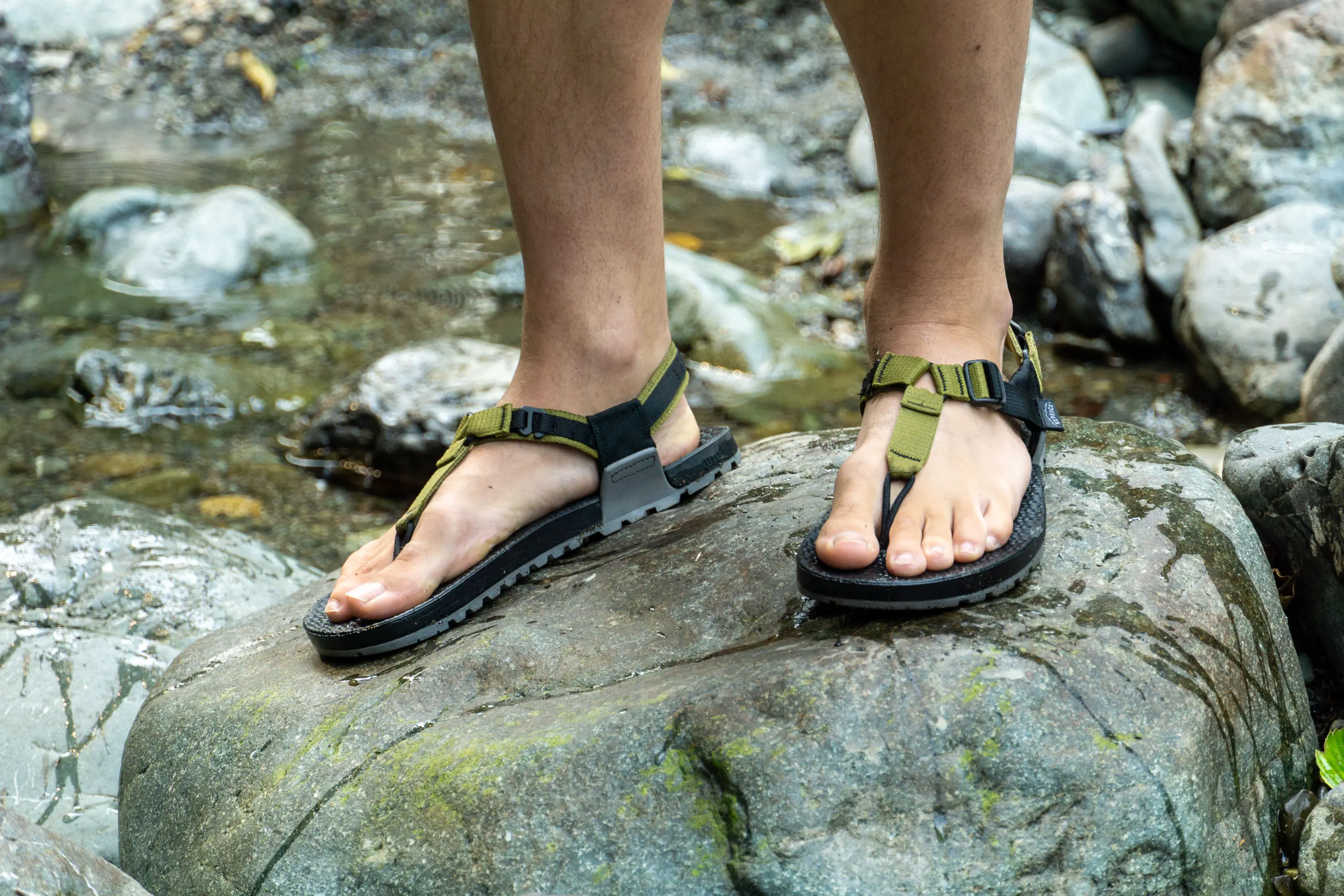



For the vast majority of folks, sizing up when in doubt is the way to go with sandals. Because they aren’t encumbered with being a full enclosure around your foot, you can deal with a bit more breathing room when sizing. Sizing up will also ensure that your toes don’t play cliffhanger with the front of the sandal, leaving them exposed to bumps and bruises.
When sizing our own personal sandals, we tend to opt for between ¼” and a ½” of space between our longest toes and the end of the sandal. This measurement should also be taken with your heel placed securely in the heel strap.
Loose sandals tend to produce friction while walking, which can drum up everyone’s least favorite trail souvenir: blisters. The same can also be true of sandals that are laced down too tight without being fully broken in yet. For these reasons, it’s best to go with a just snug fit, with a small amount of wiggle room to accommodate foot swelling and the motion of walking.
Choosing the right pair of sandals has a lot to do with what you’d like to do in them. Adventure-ready sandals will differ wildly from those meant to be slid into after a tough run, and trying to use one for the other will yield less than satisfying results. We’d urge a good survey of your day-to-day adventures, and choose a sandal that’s suited to that.
When it comes to a daily driver sandal, it’s tough to go wrong with the Bedrock Cairn Evo 3D Pro or Chaco Z/Clouds, which both offer up a study platform, mega-adjustable straps, and outsoles that will keep gripping years down the road. At $55, the Teva Original Universal sandals are a downright steal. And if you’ll be heading directly for the water, the Astral PFD sandals can’t be beat.
While the ease of flip-flops is undeniable, there are a few reasons you may want to stick with a more full-featured sandal.
First off, flip flops obviously sport a good bit less protection than other sandals, with stubbed toes being the number one lodged complaint against them. In worst-case scenarios, you also can have your flip flops fly off entirely, leaving your tender foot totally unprotected.
A real-deal podiatrist will also tell you that flip-flop syndrome is a real thing, and is caused by the toe scrunch many of us do to keep the sandals in place while walking. This scrunch stretches the tissues on the bottom of the foot, and can lead to plantar fasciitis — a painful ailment that can make walking hurt a good bit.
We love our flip flops for quick jaunts to the beach, as shower shoes, and as decompression wear after a long hike. But for long-term use, you’ll always catch us in our real-deal sandals.
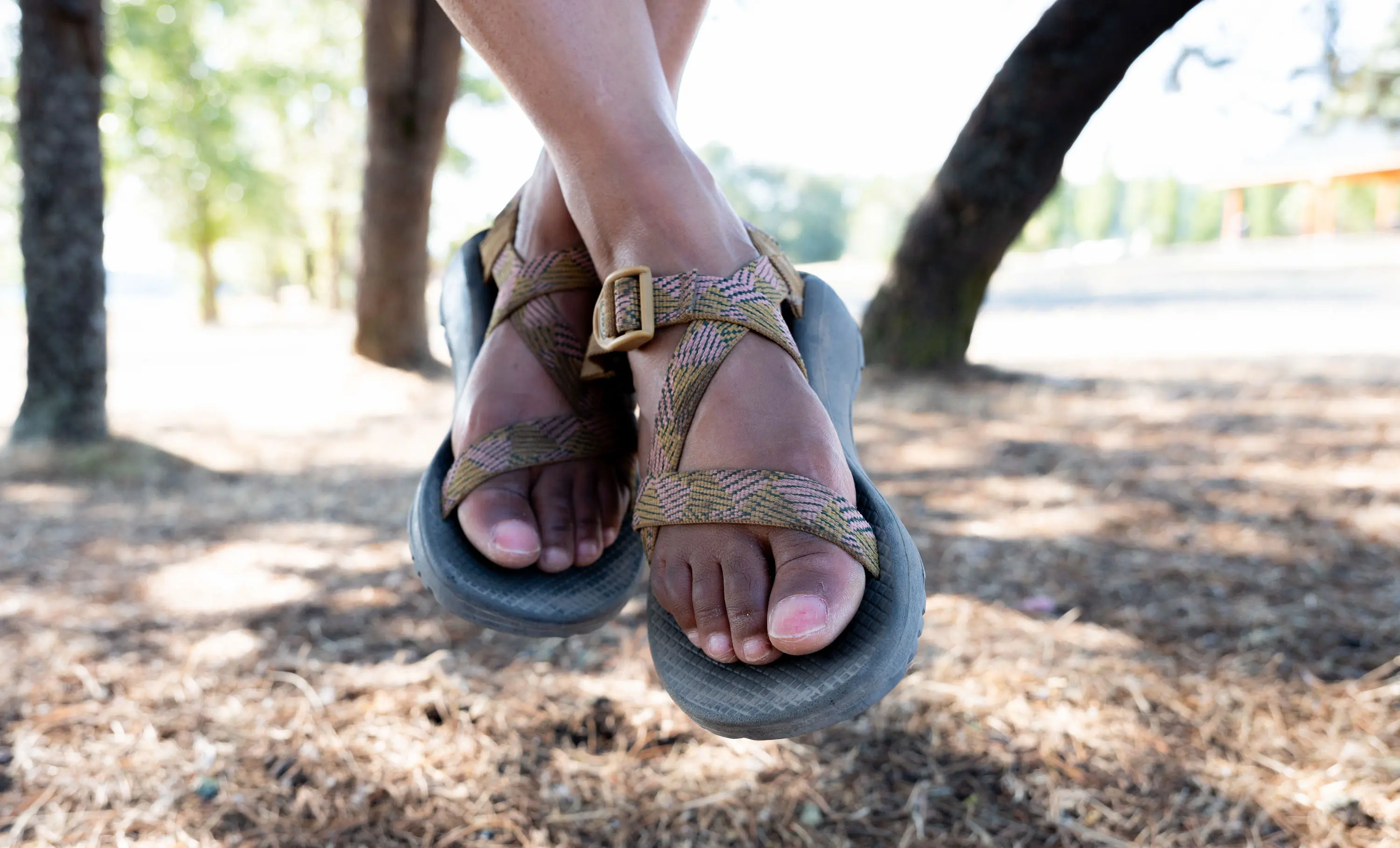

The Best Hiking Sandals for Women of 2025
Whether you need footwear that can keep up with your hiking boots, a set to slide into after a strenuous climb, or just an everyday sandal, we’ve got your feet covered.


The Best Trail Running Shoes of 2025
We tested and ranked the best trail running shoes for every style and budget. Top picks include shoes from SCARPA, HOKA, and more!
